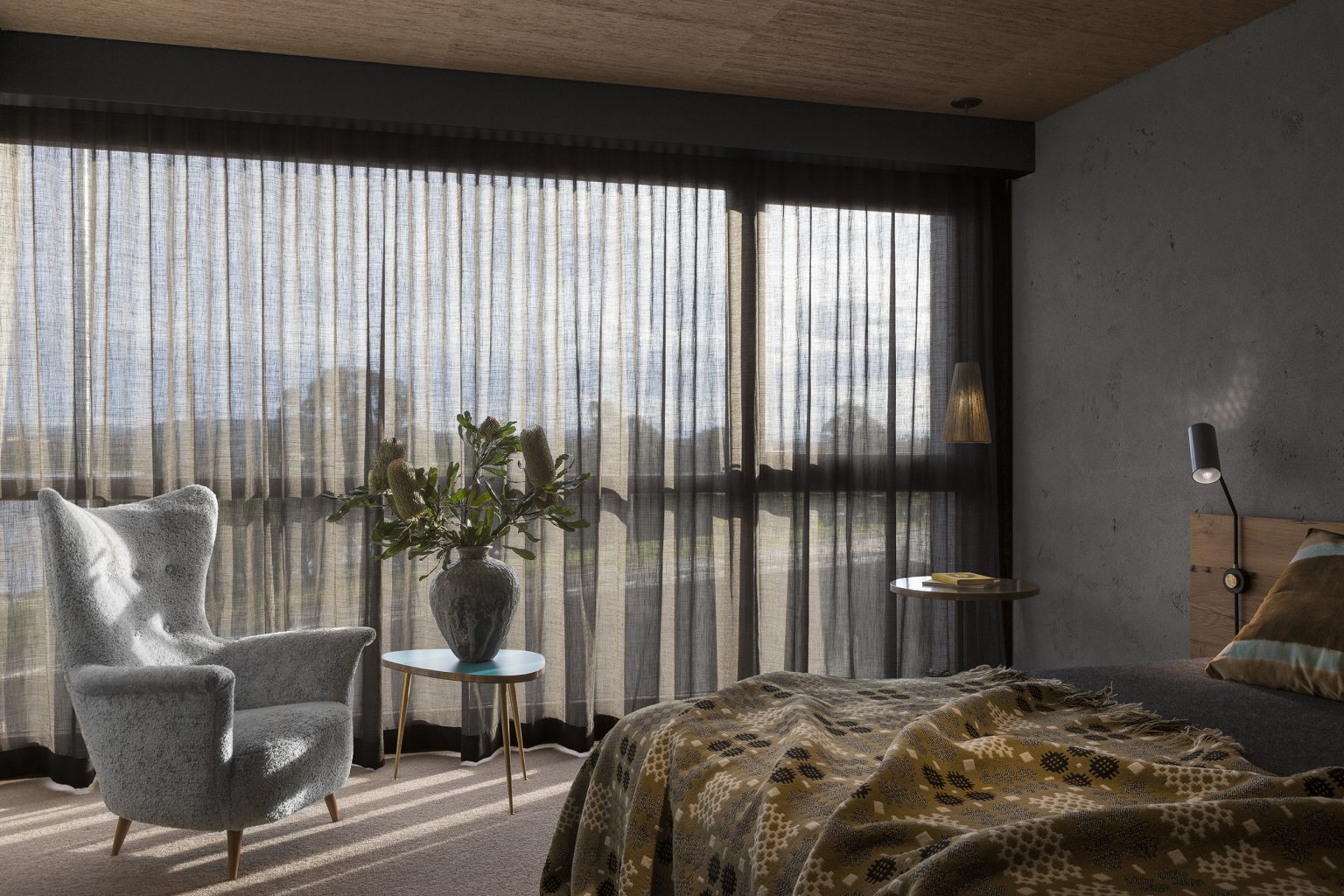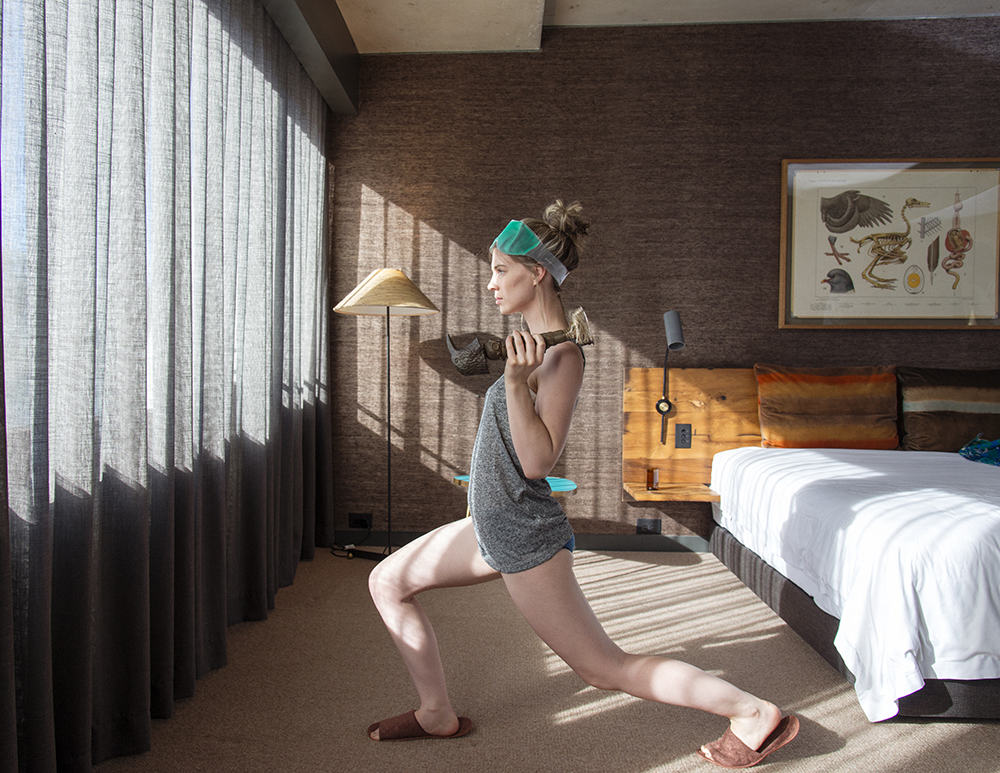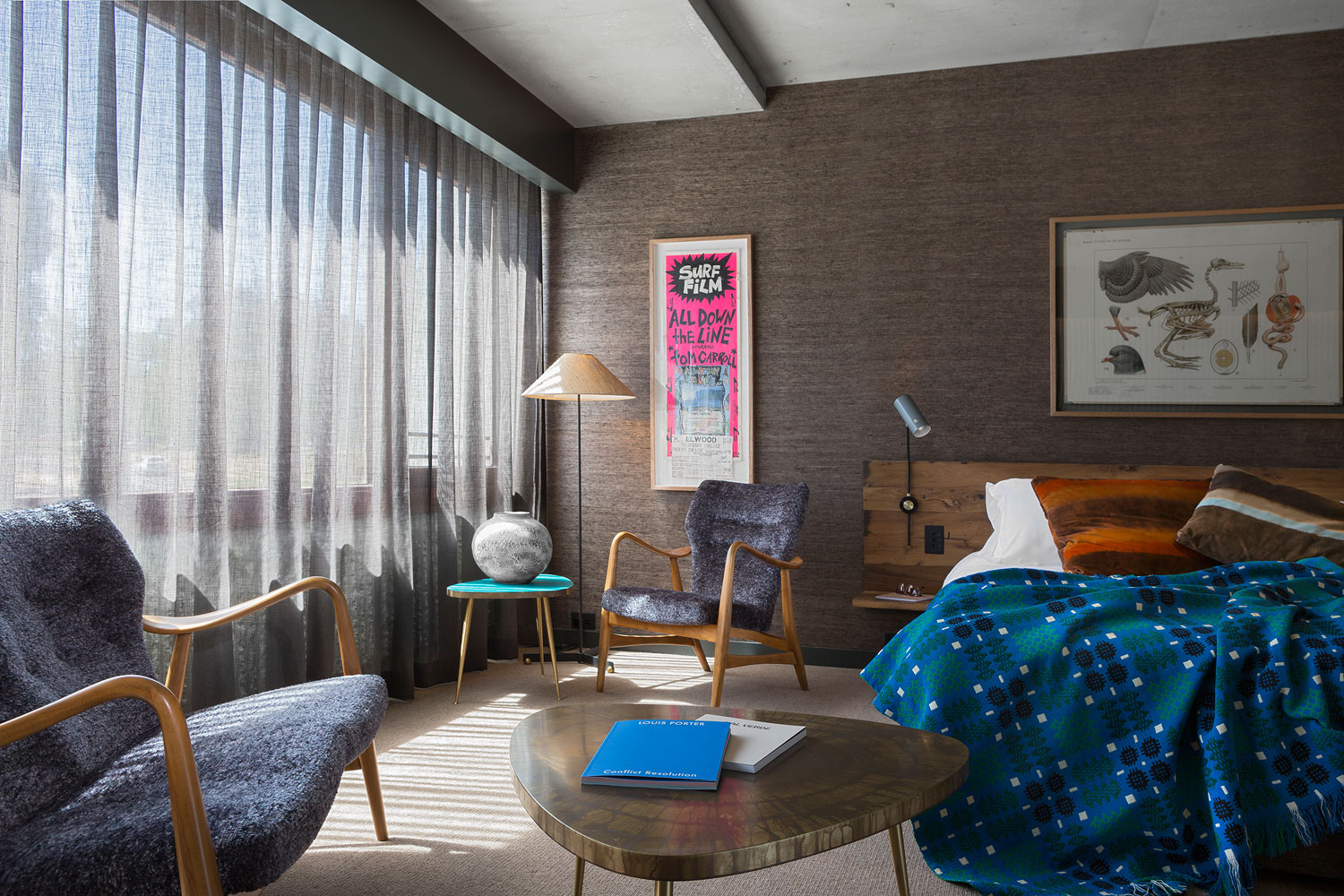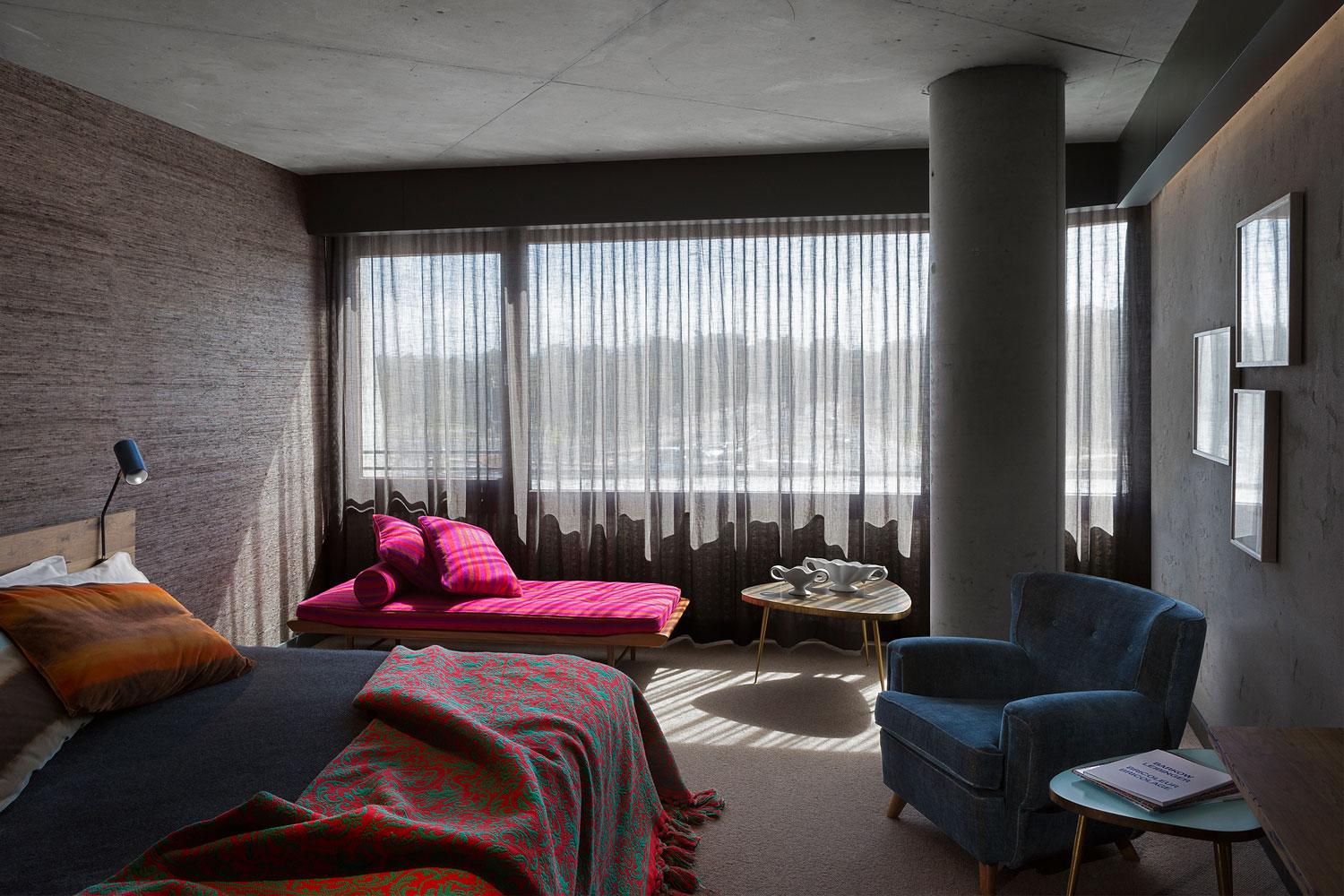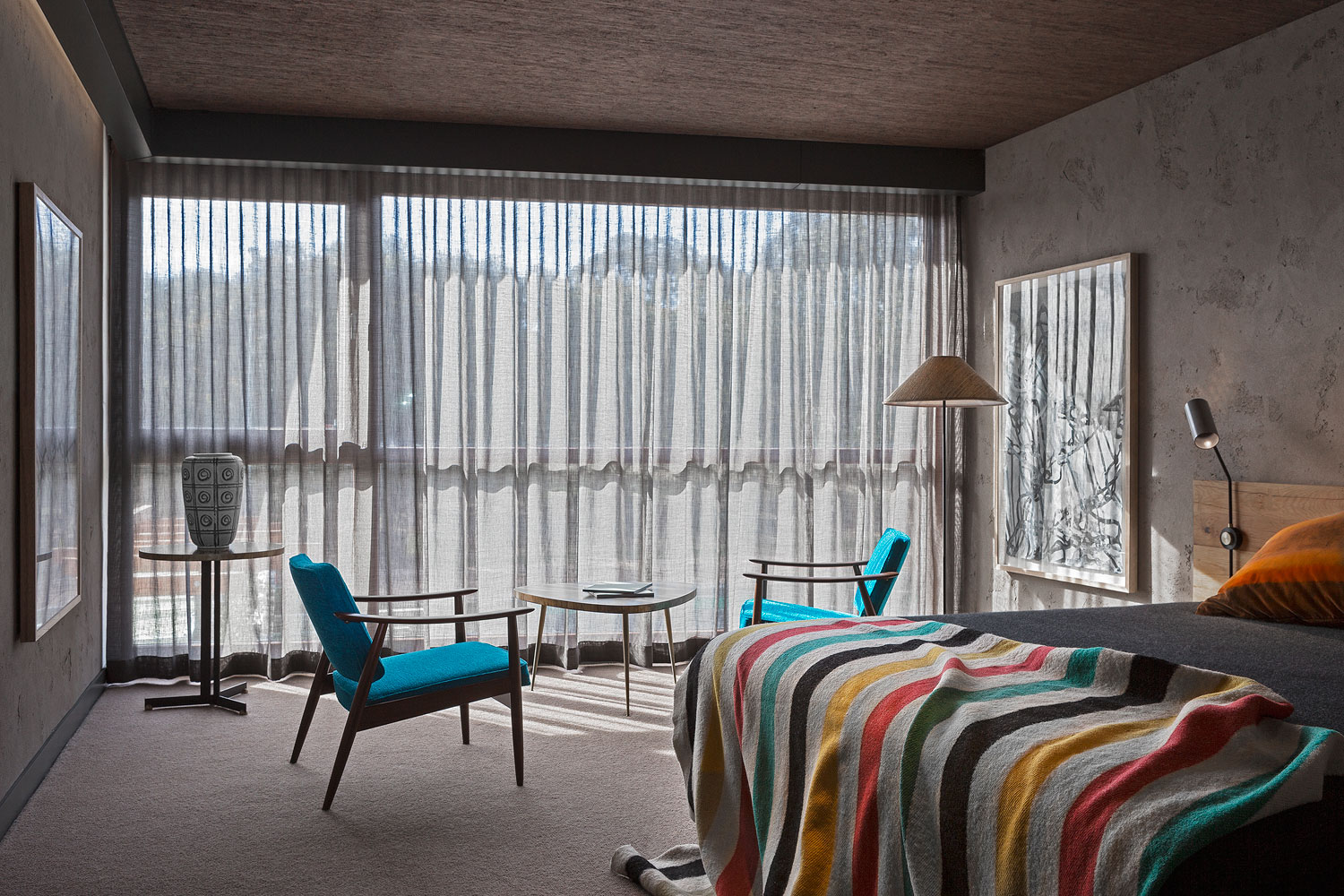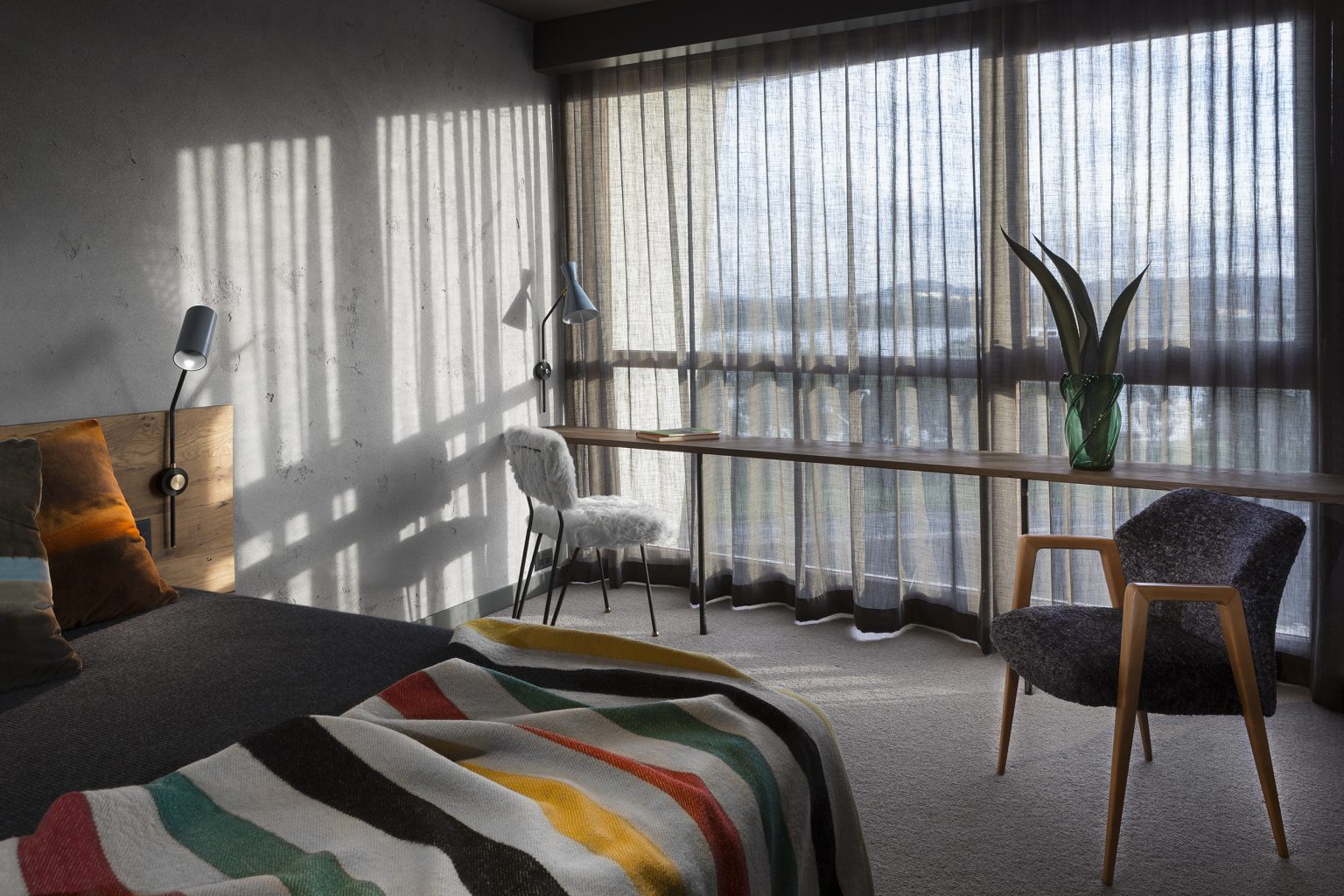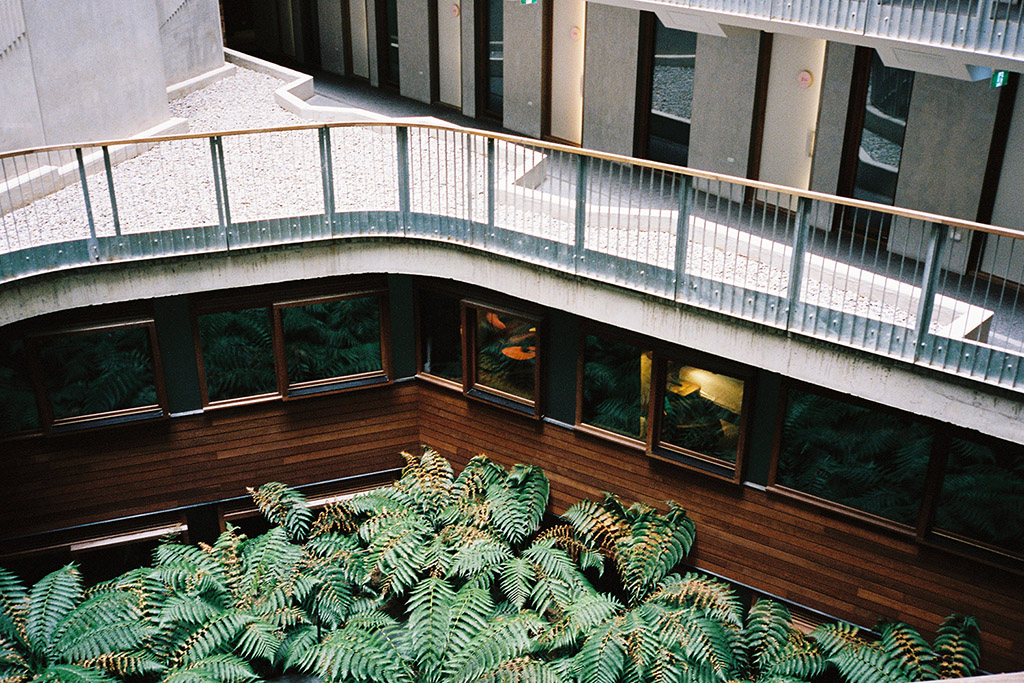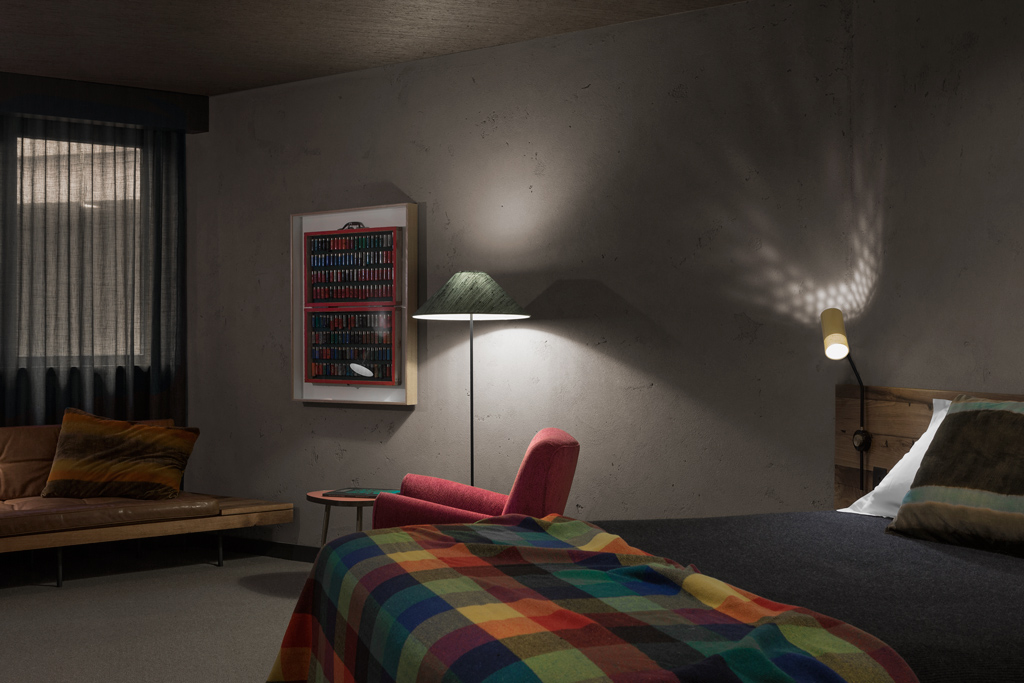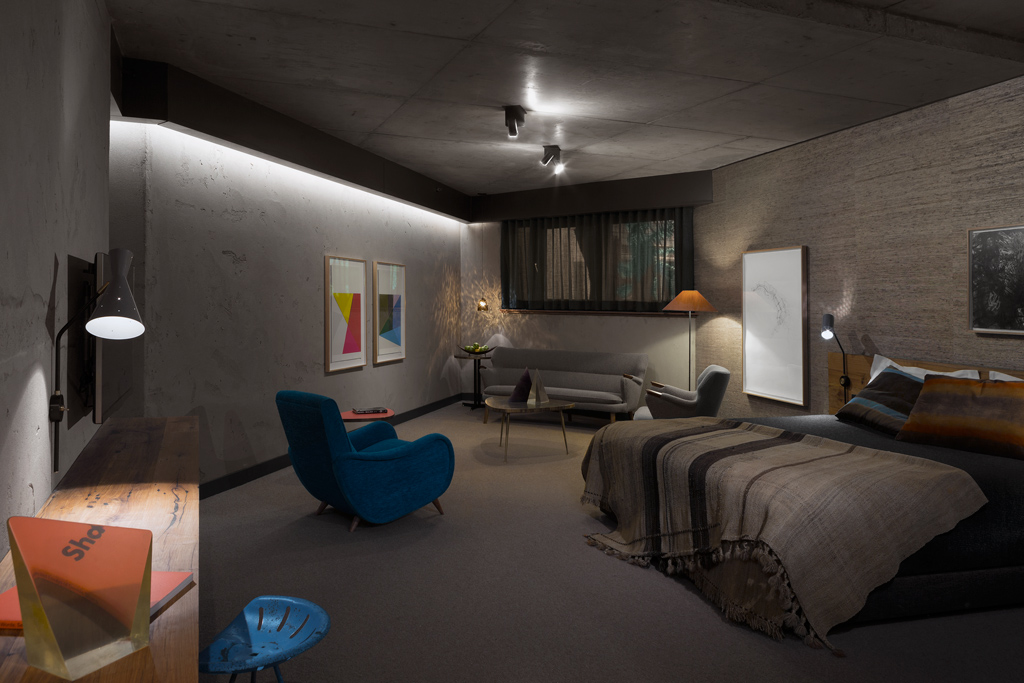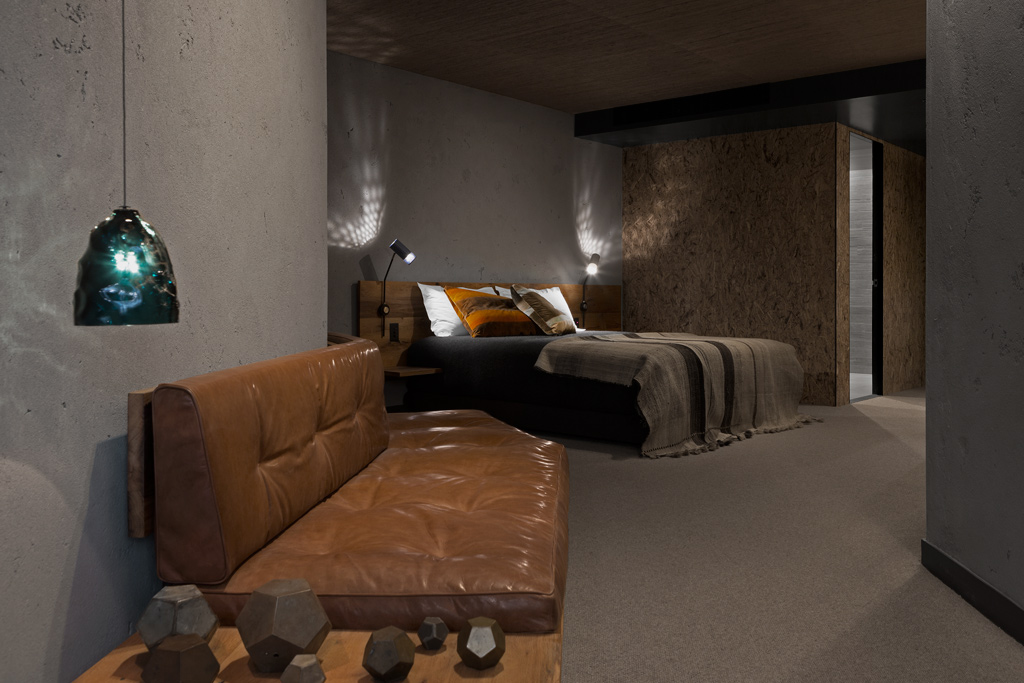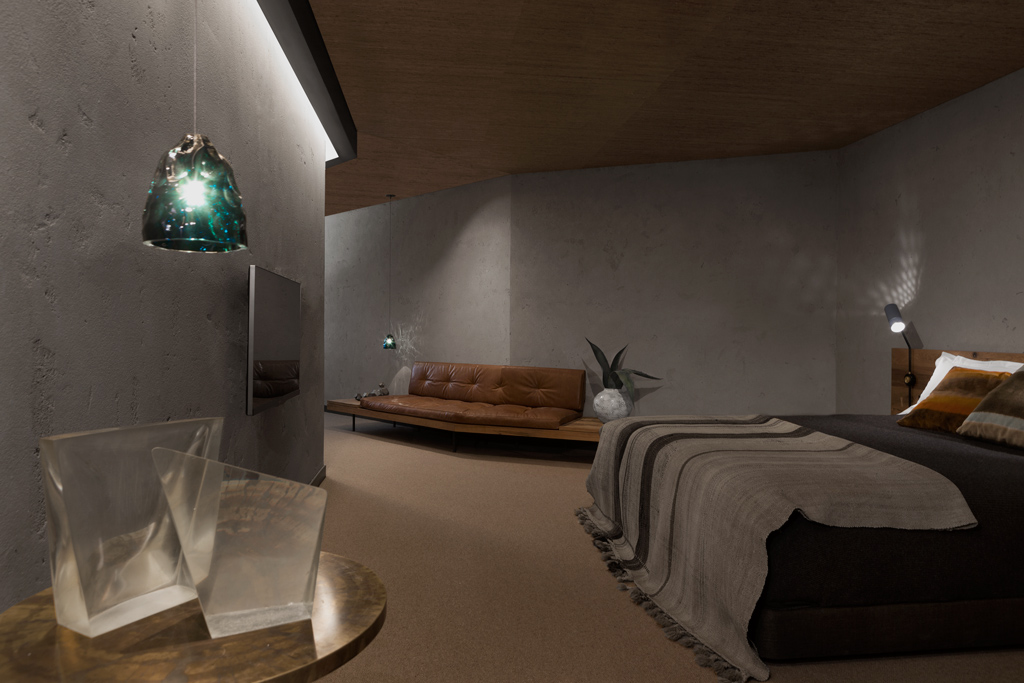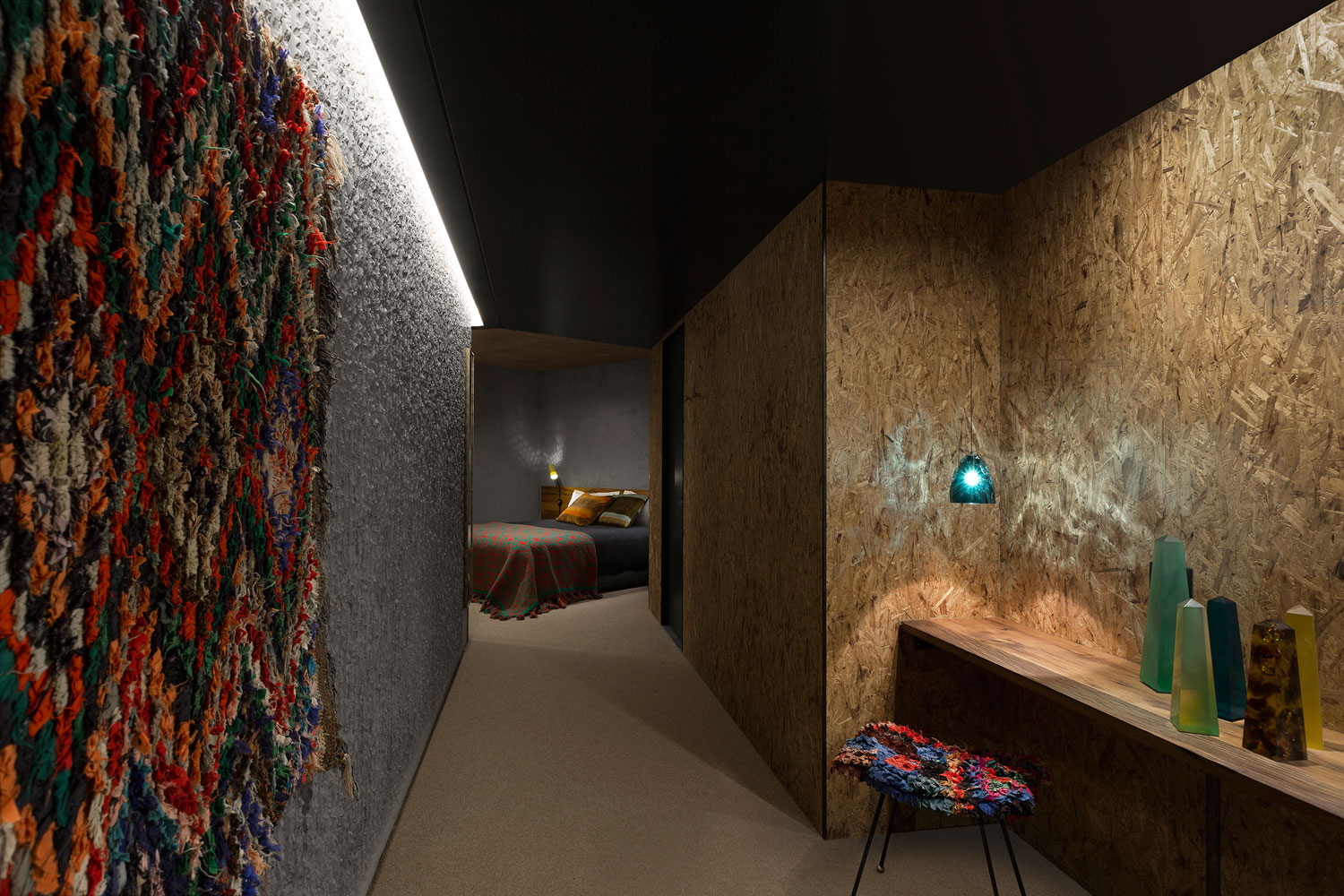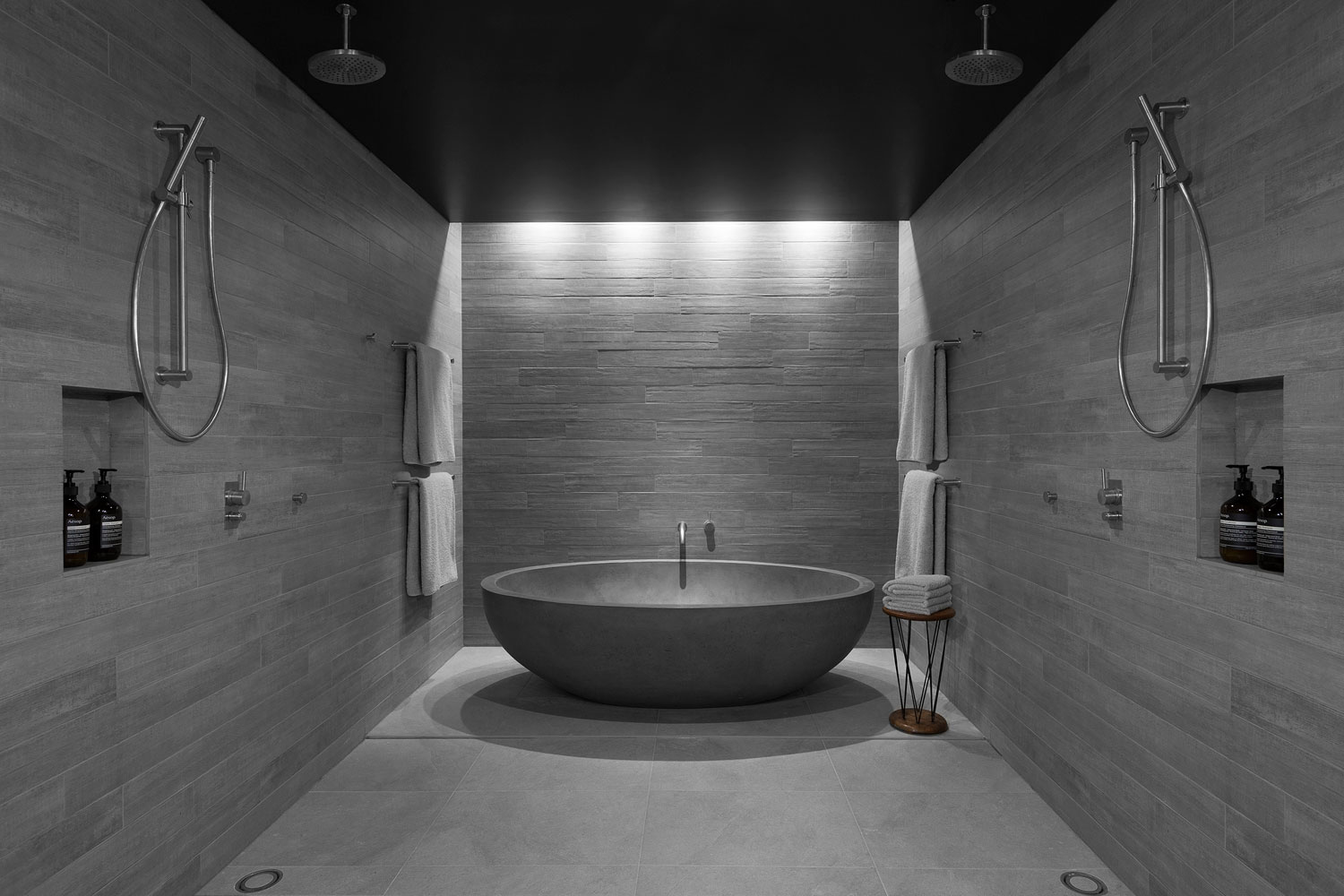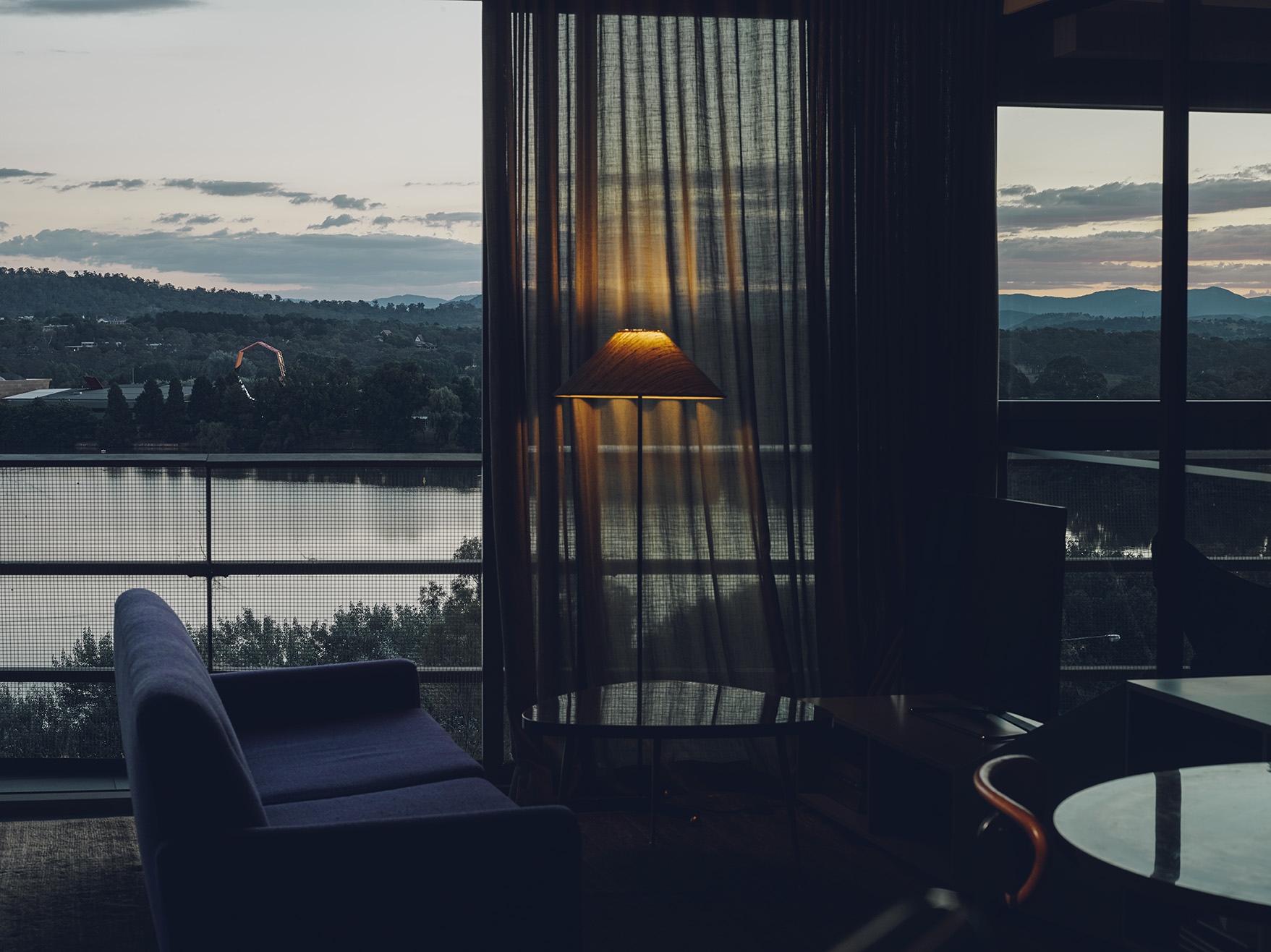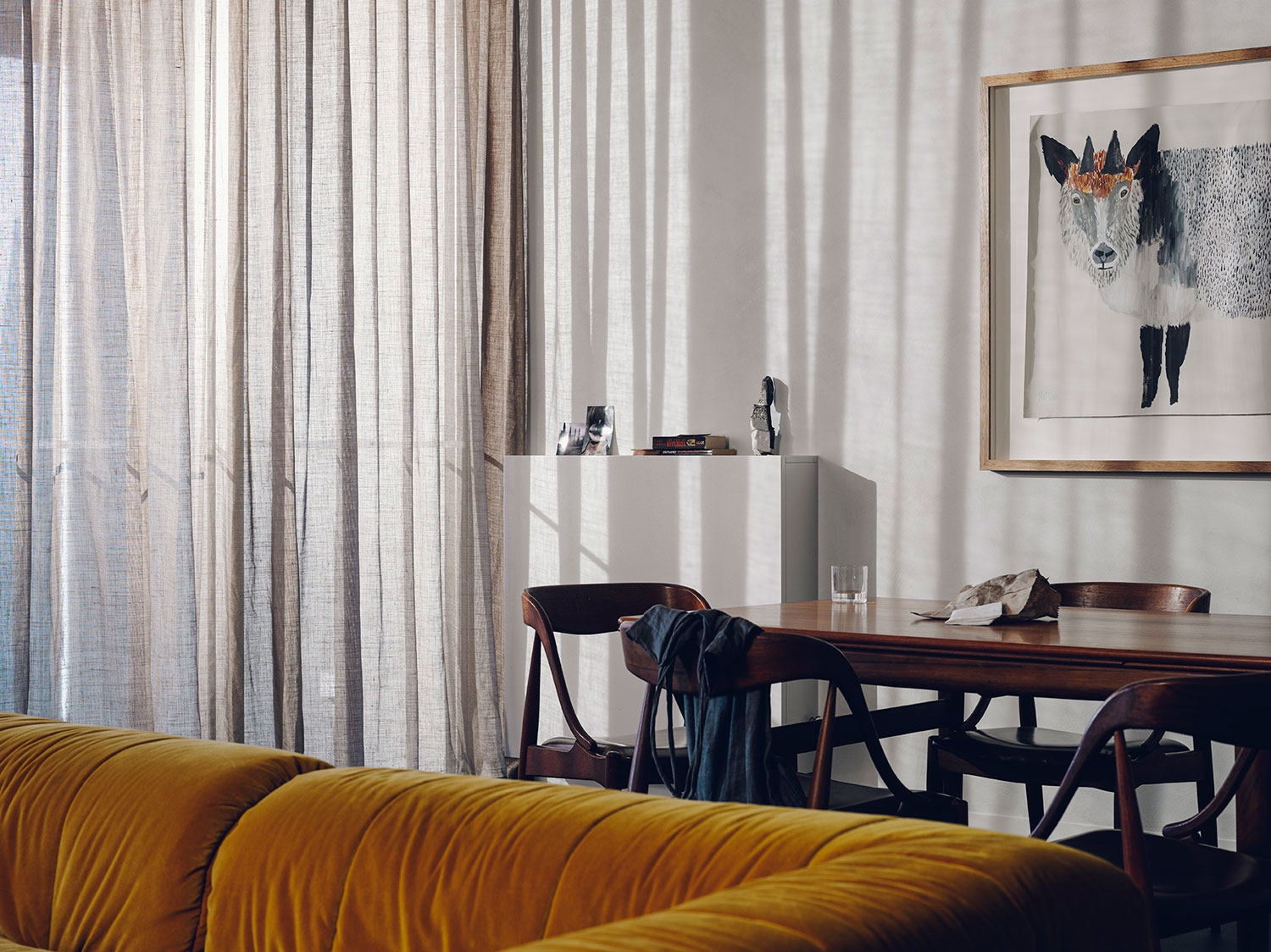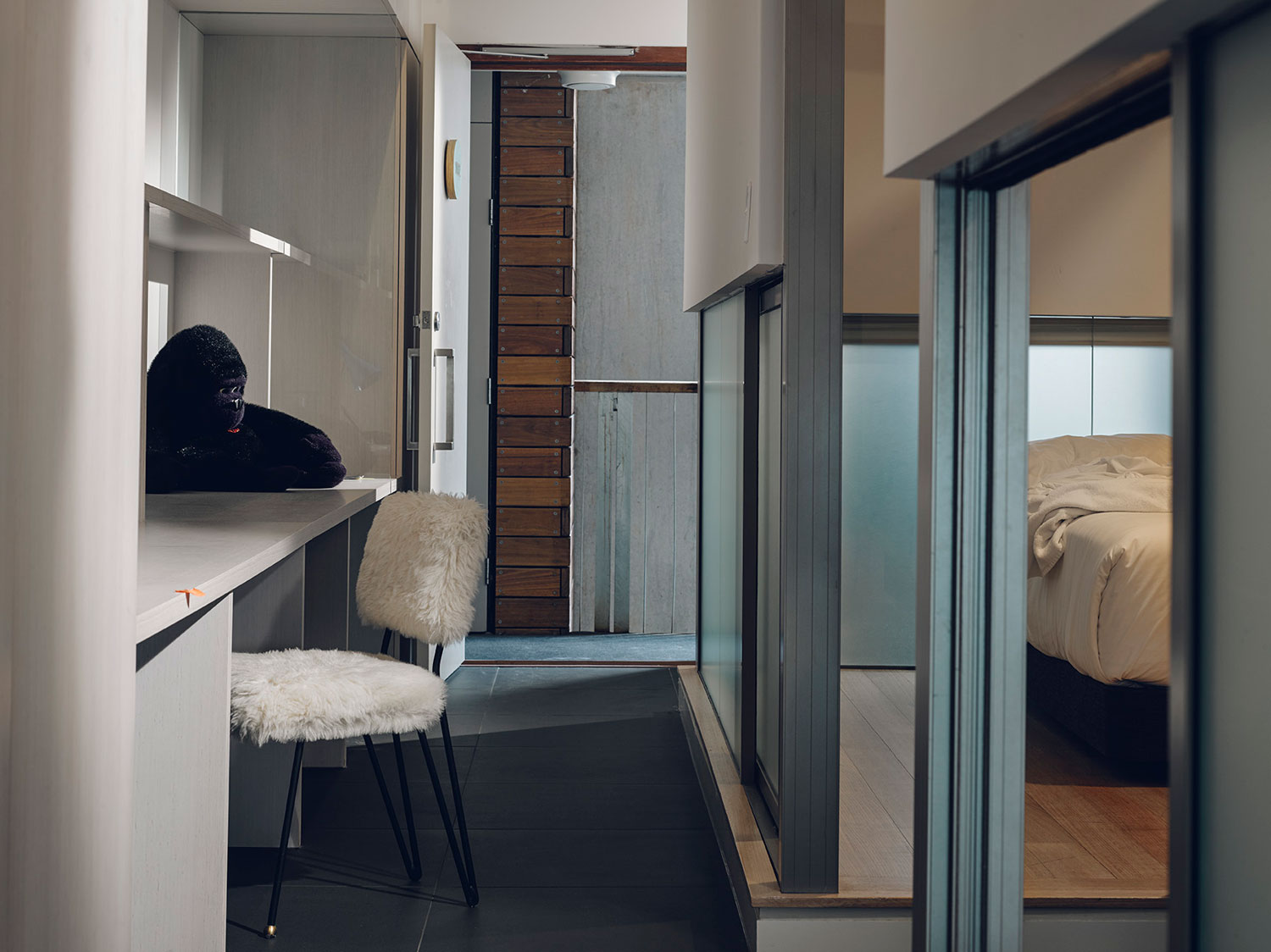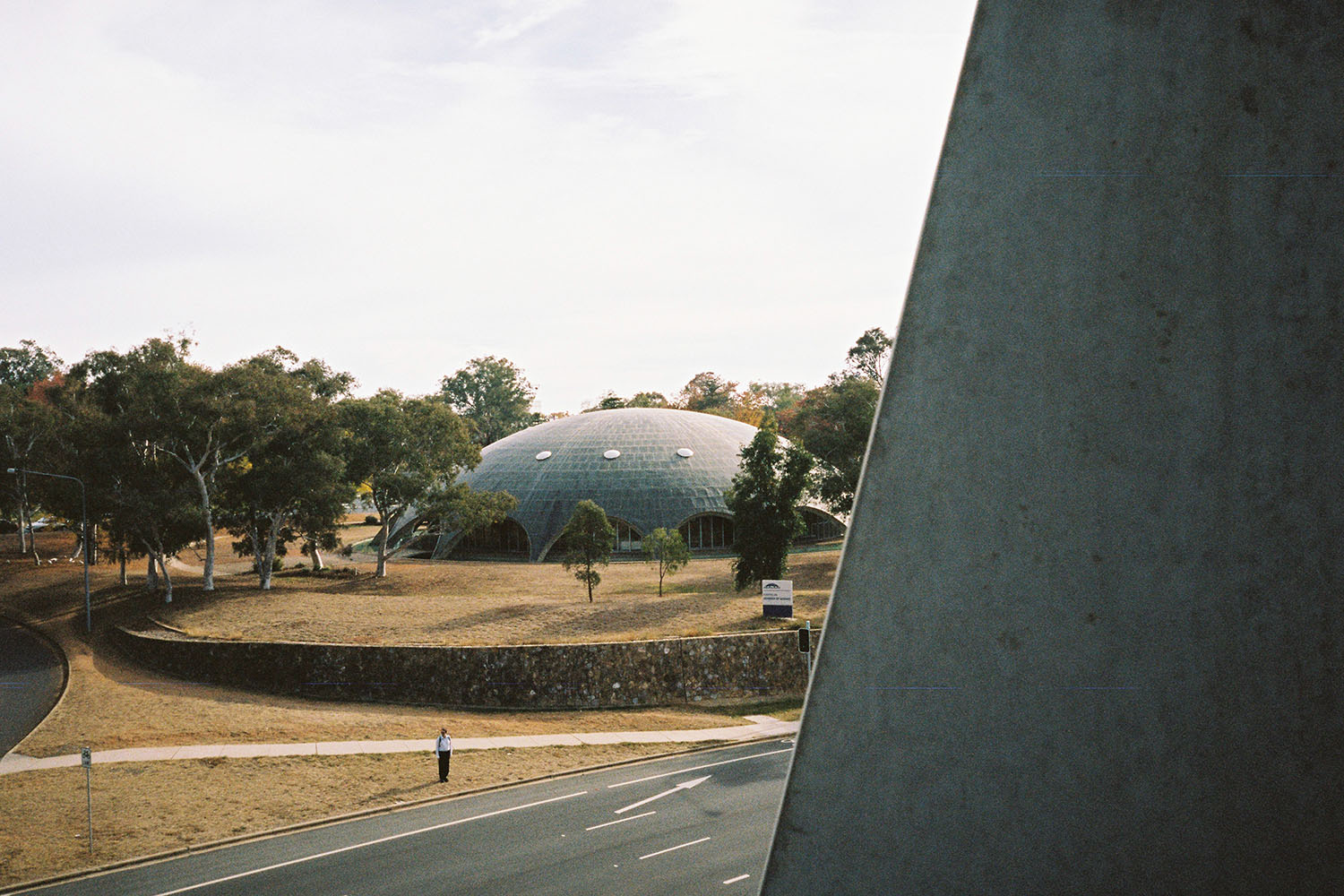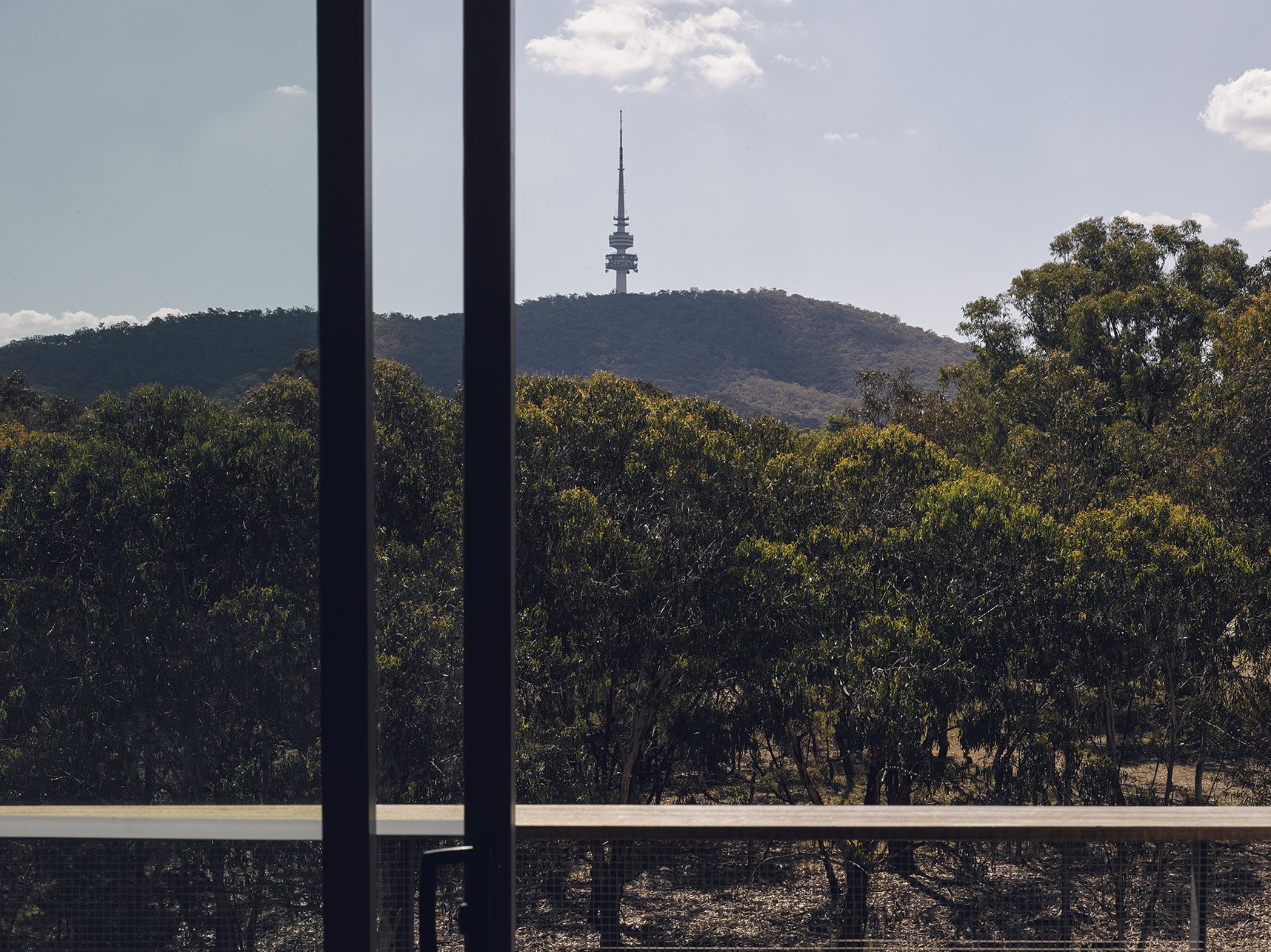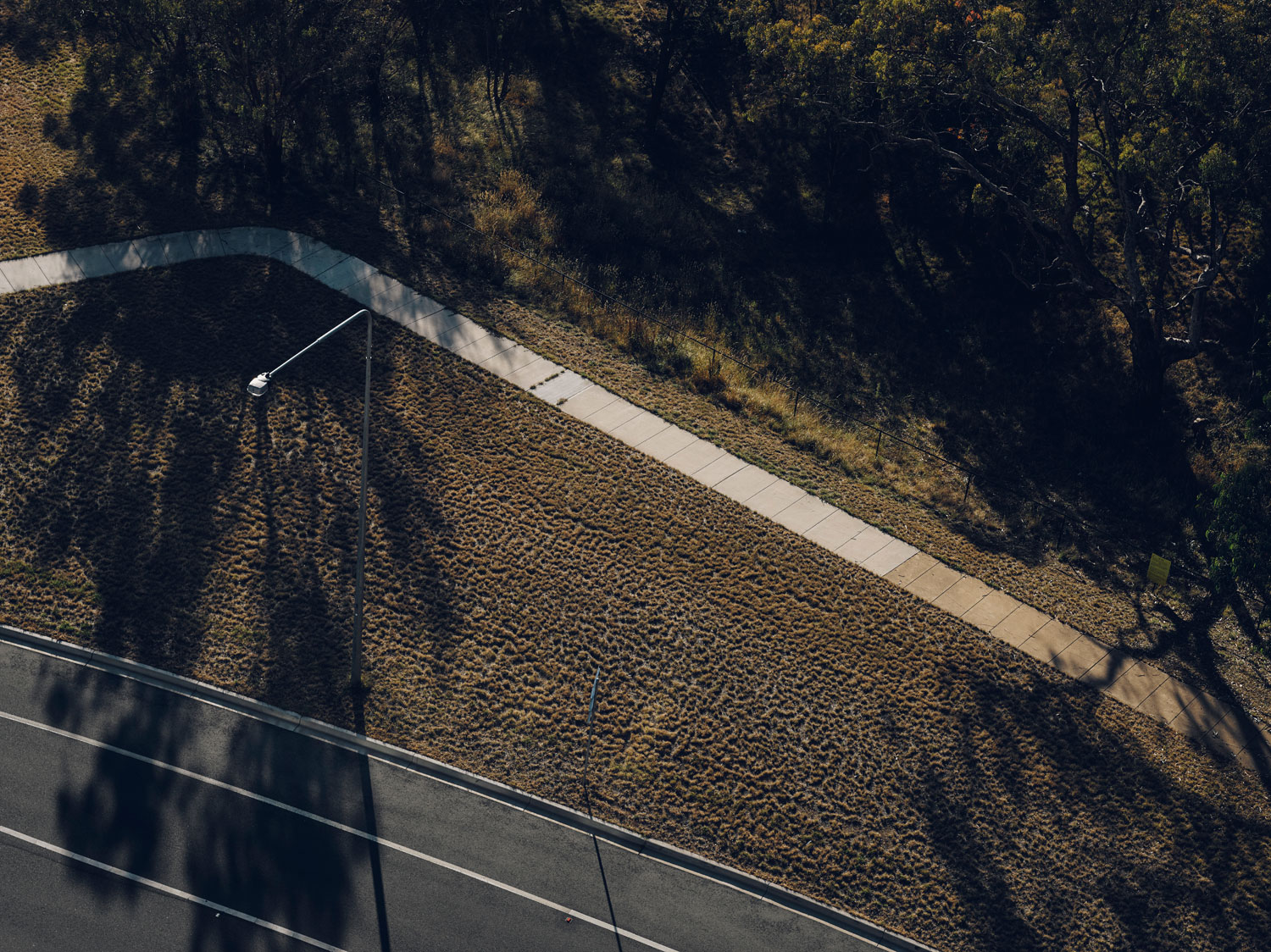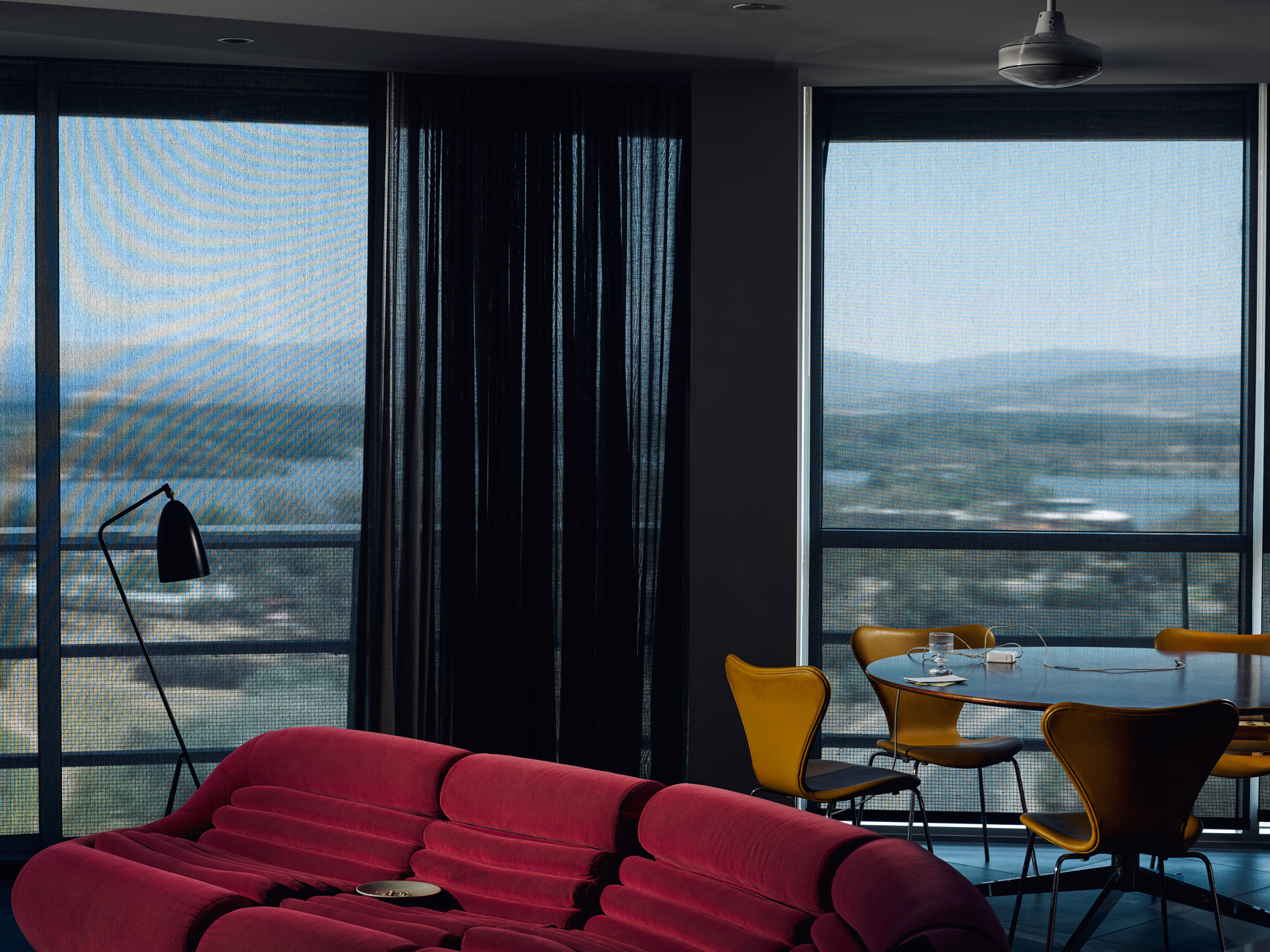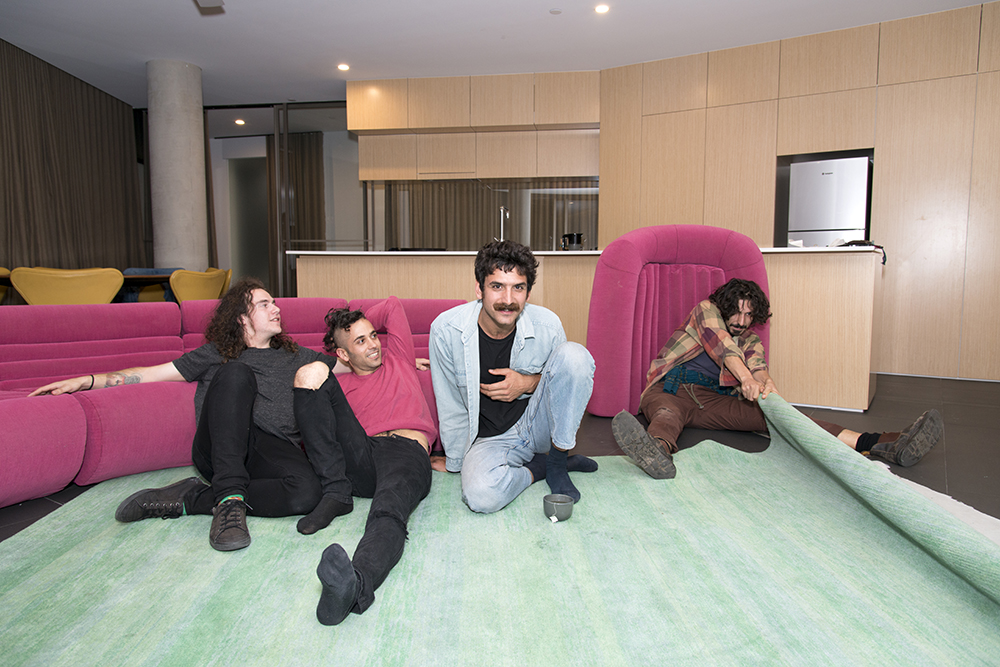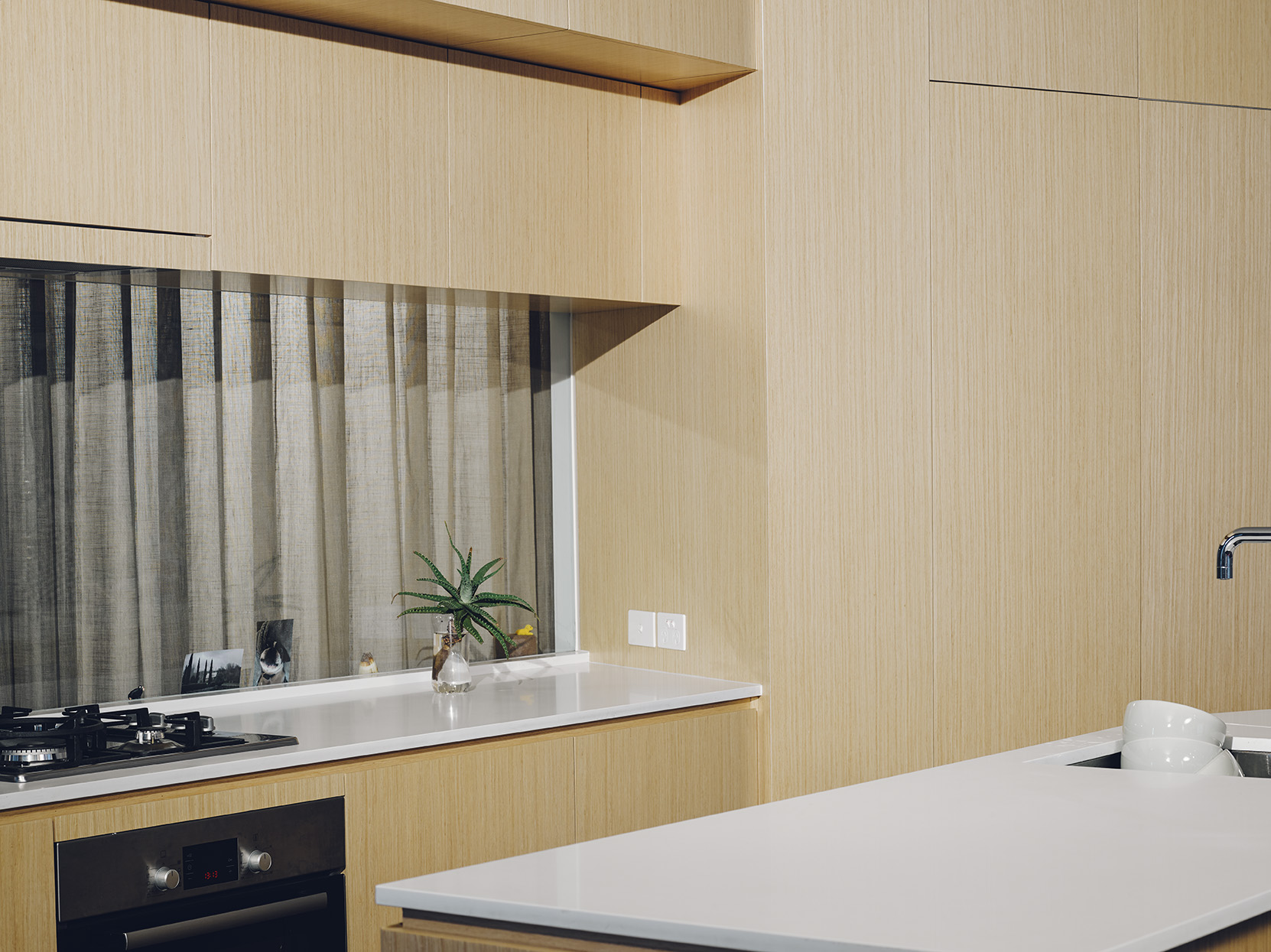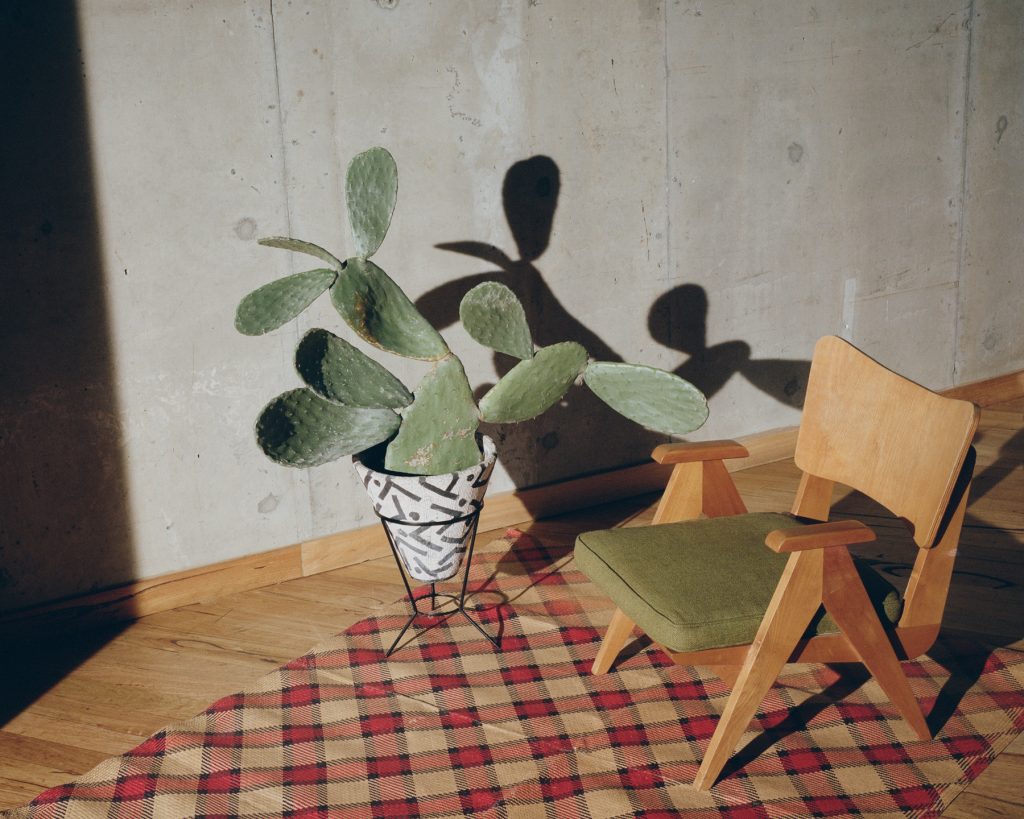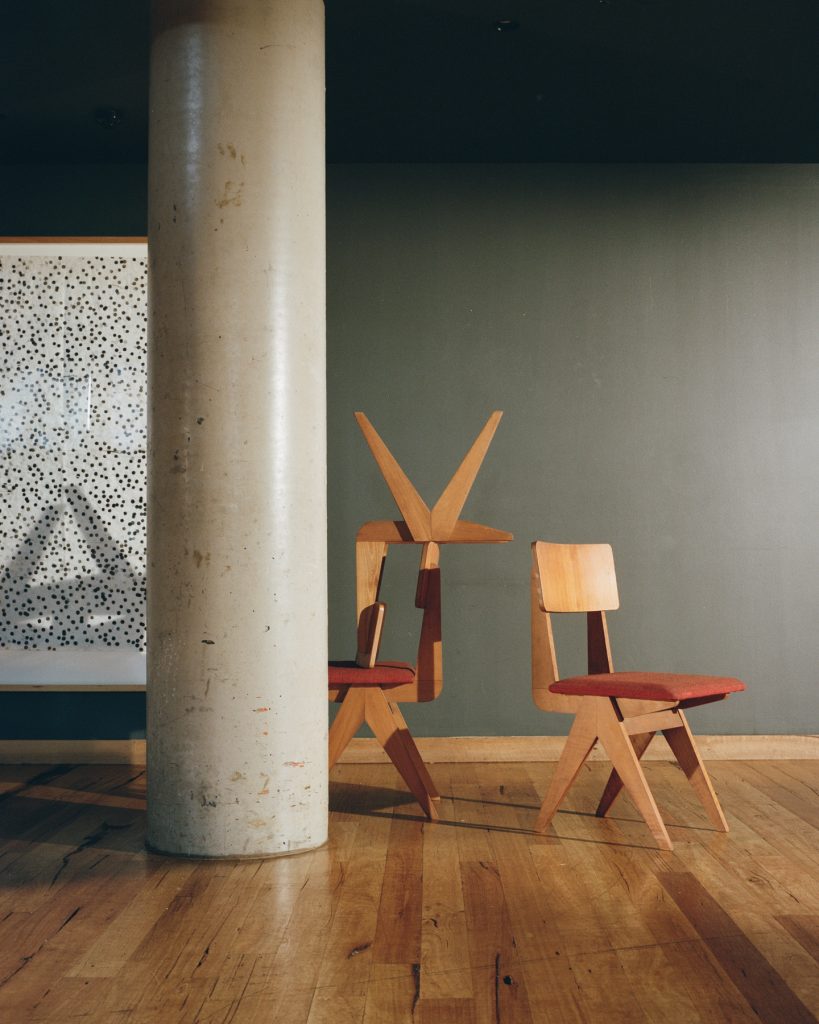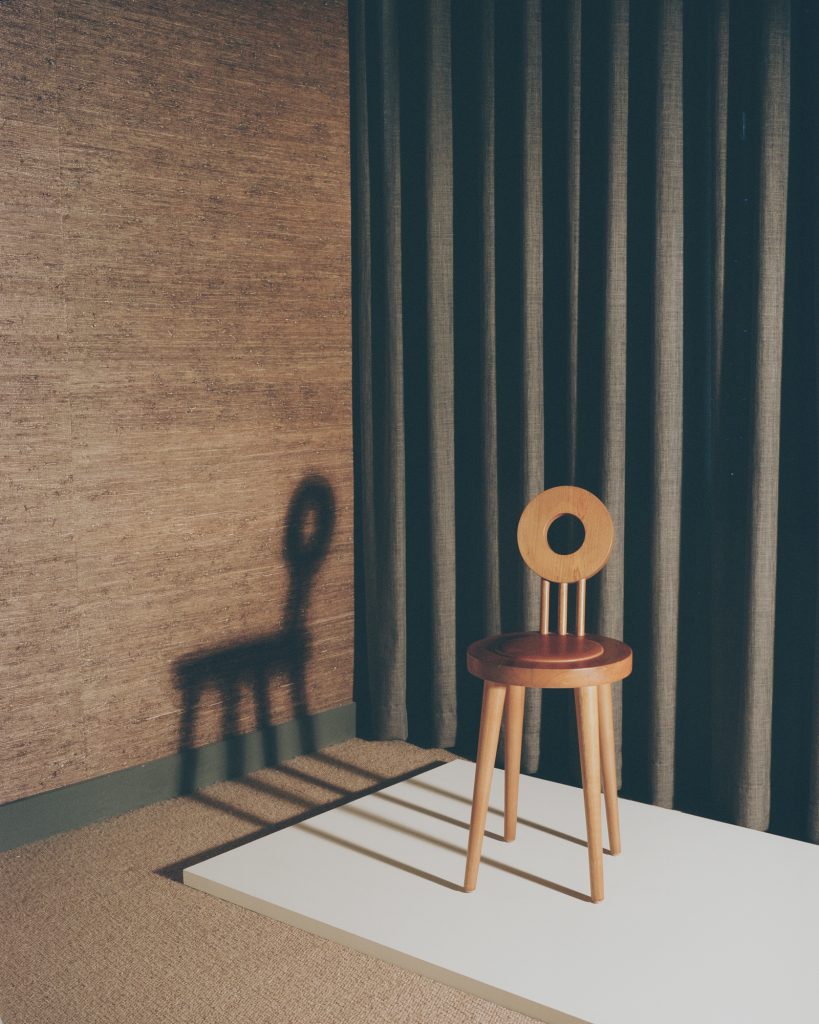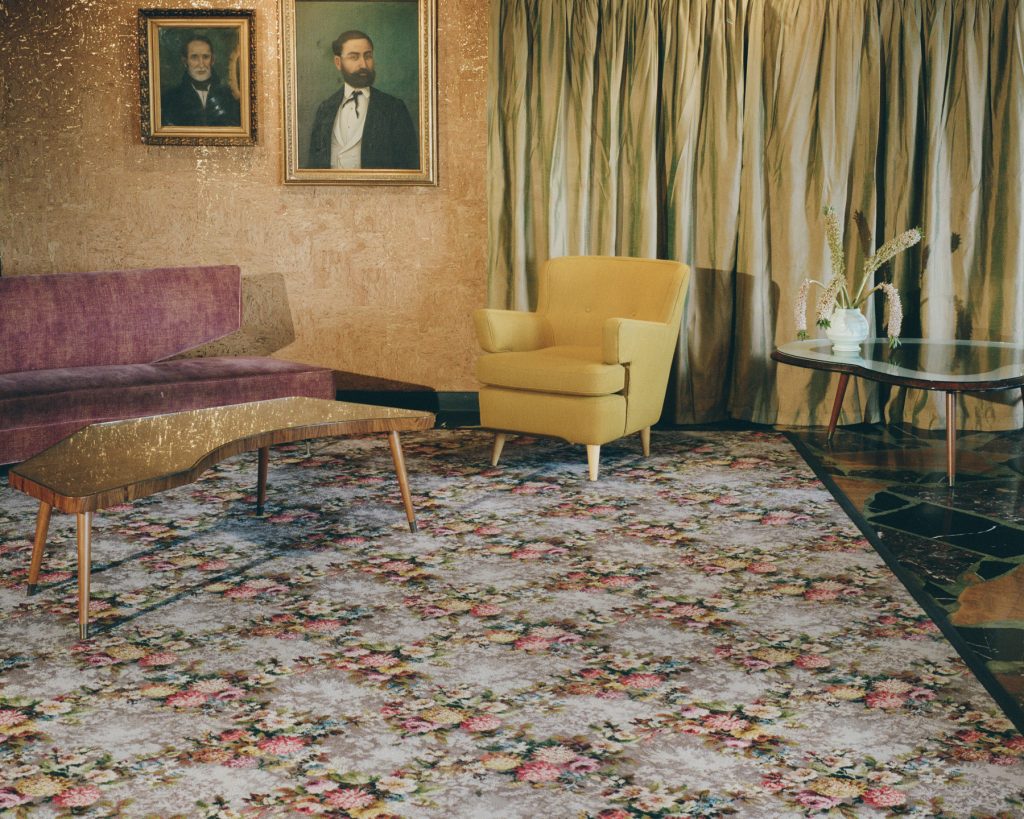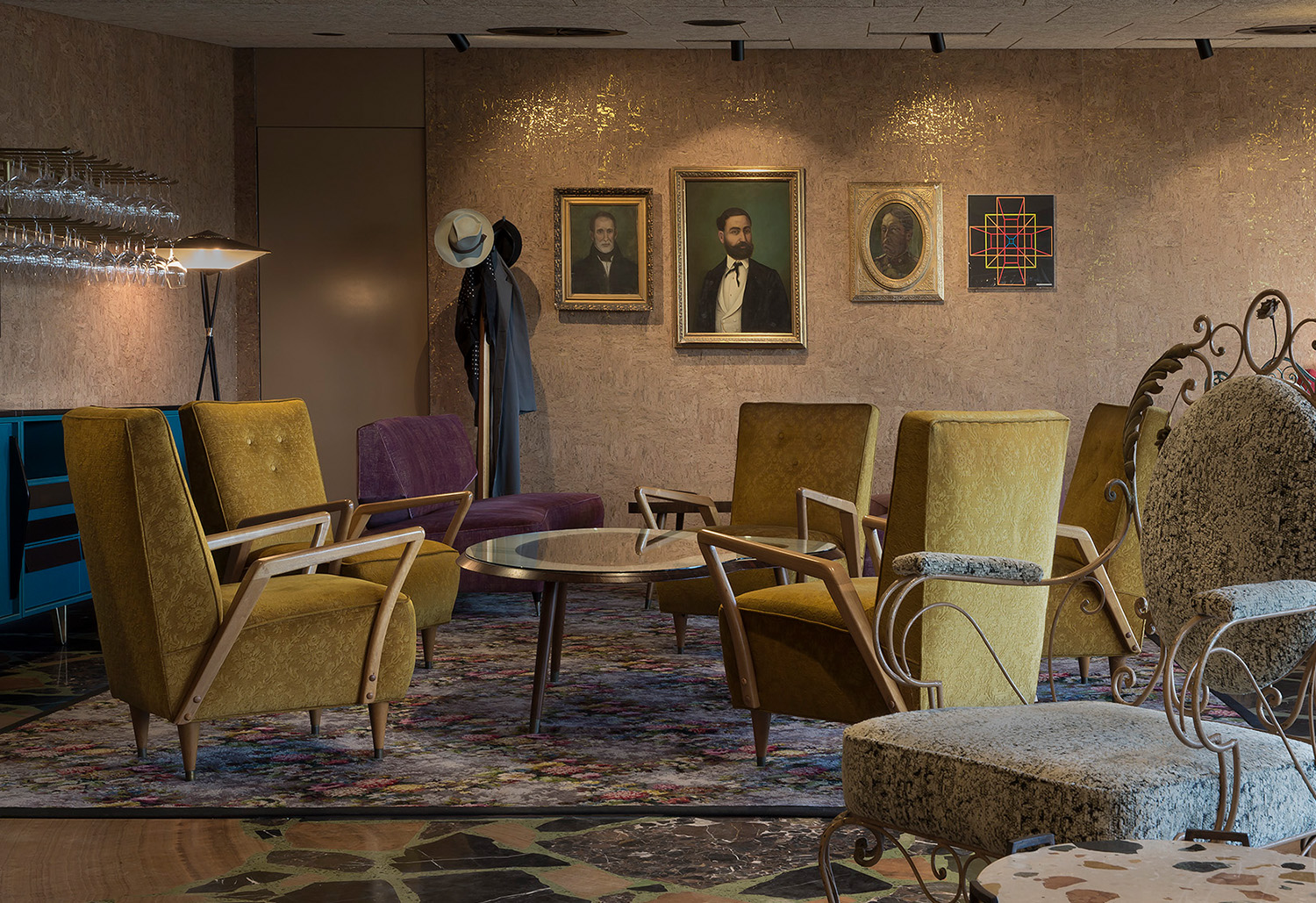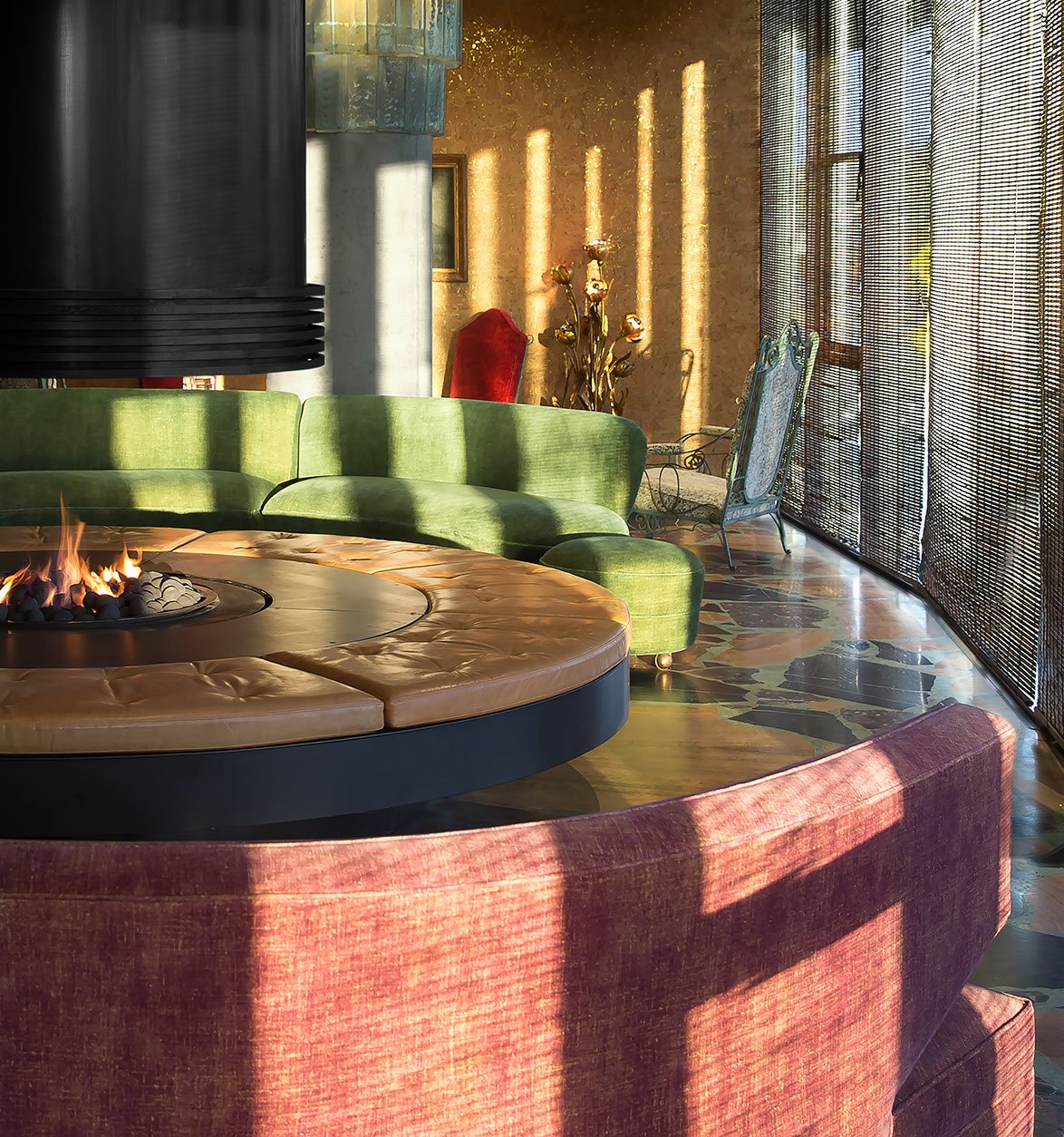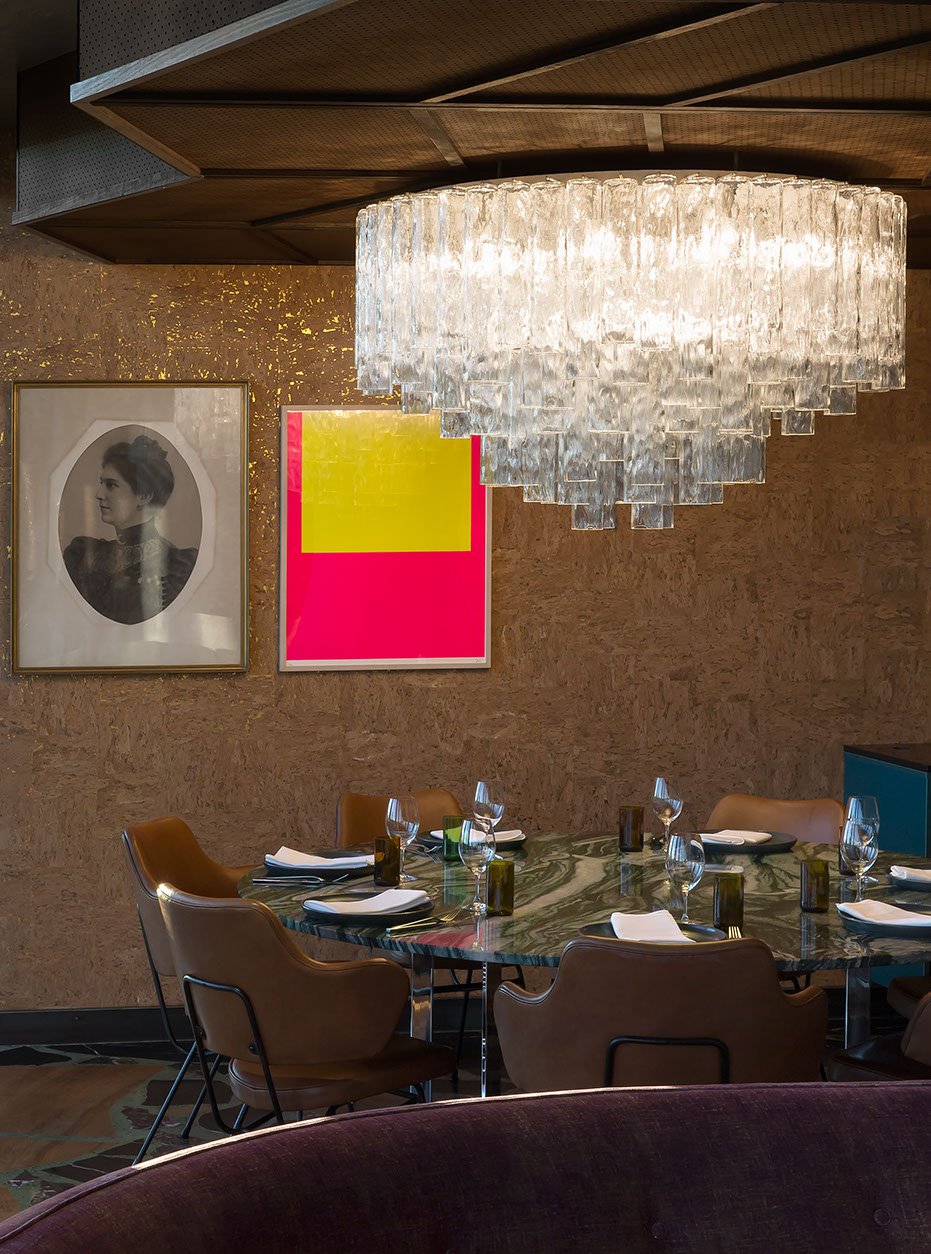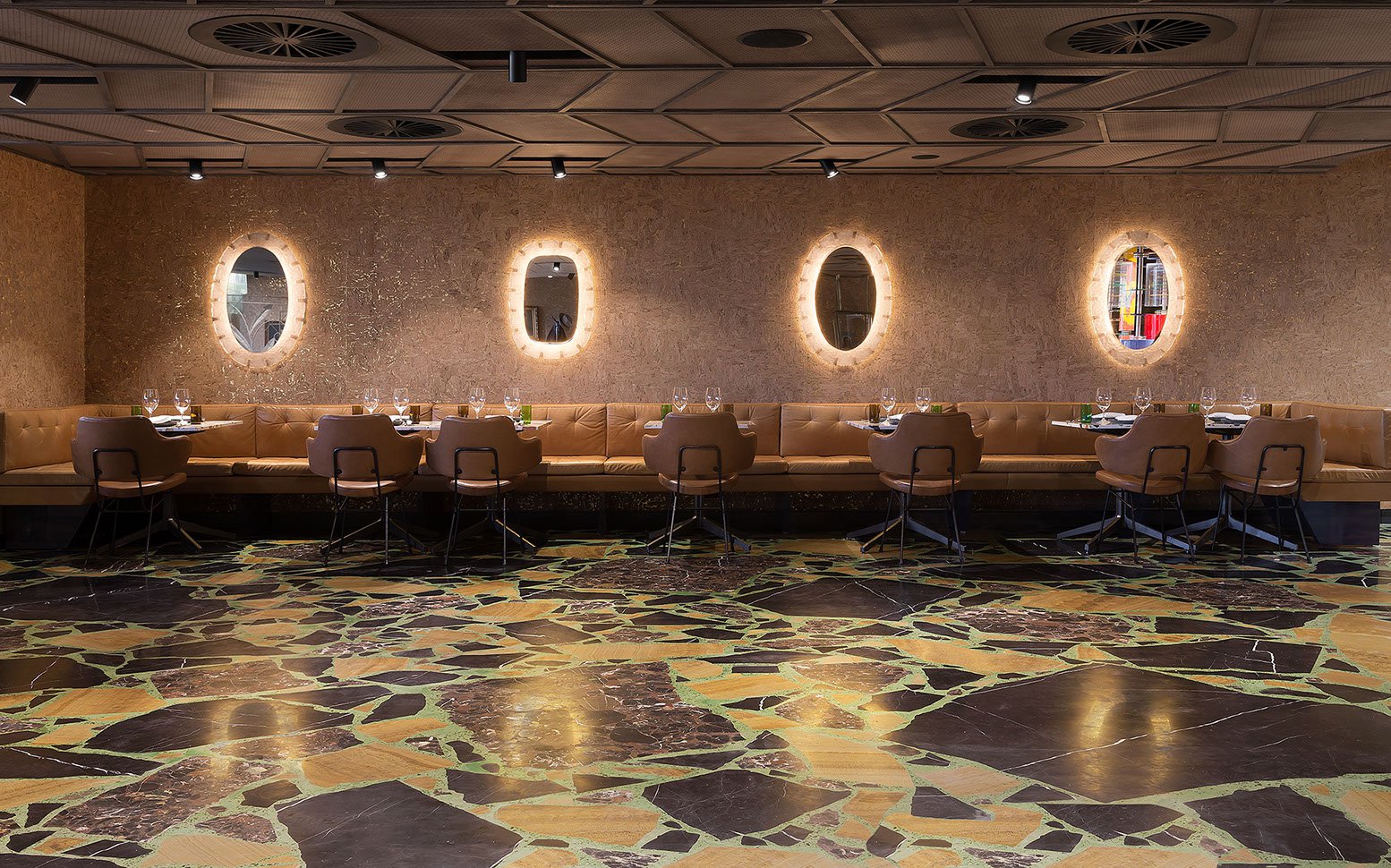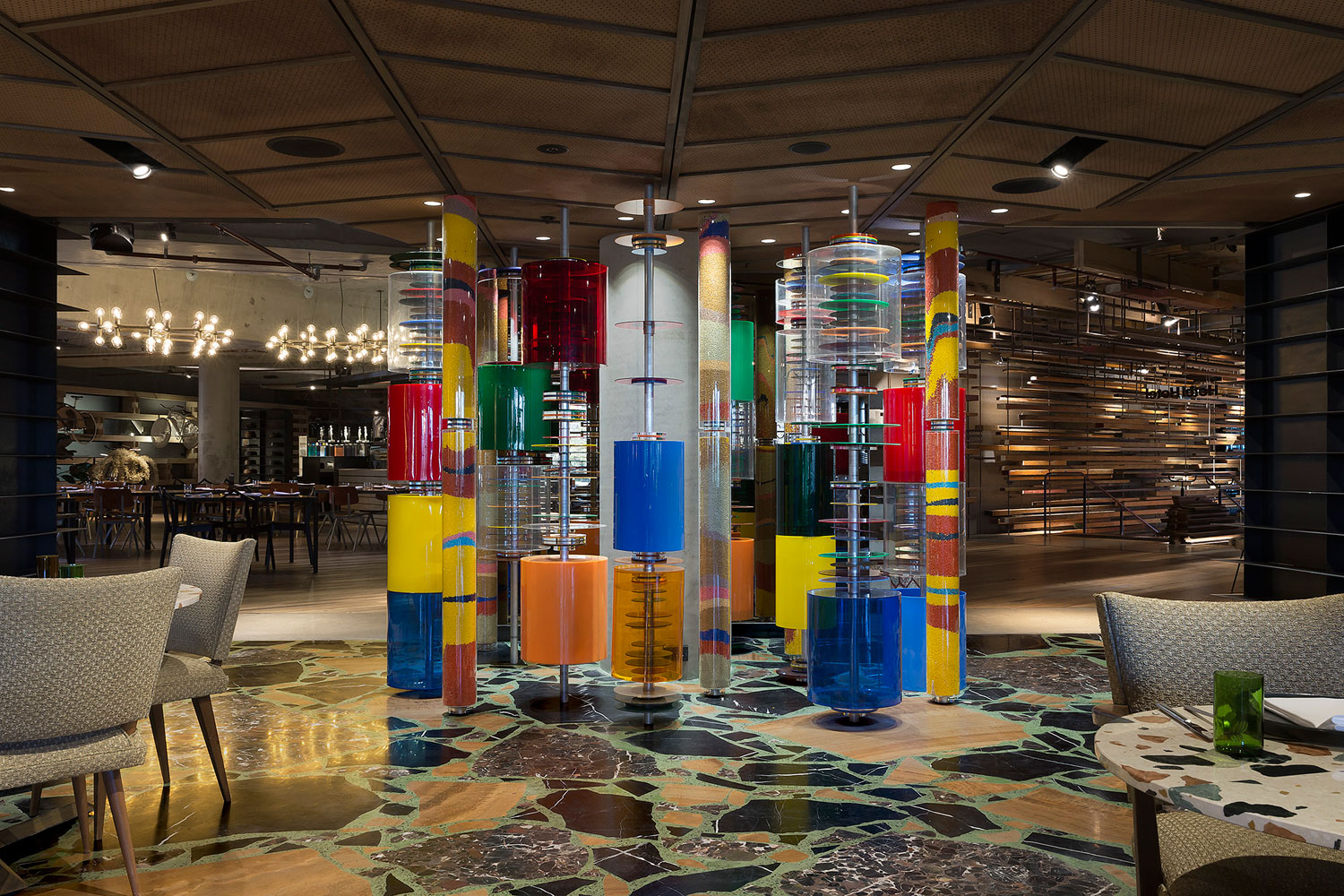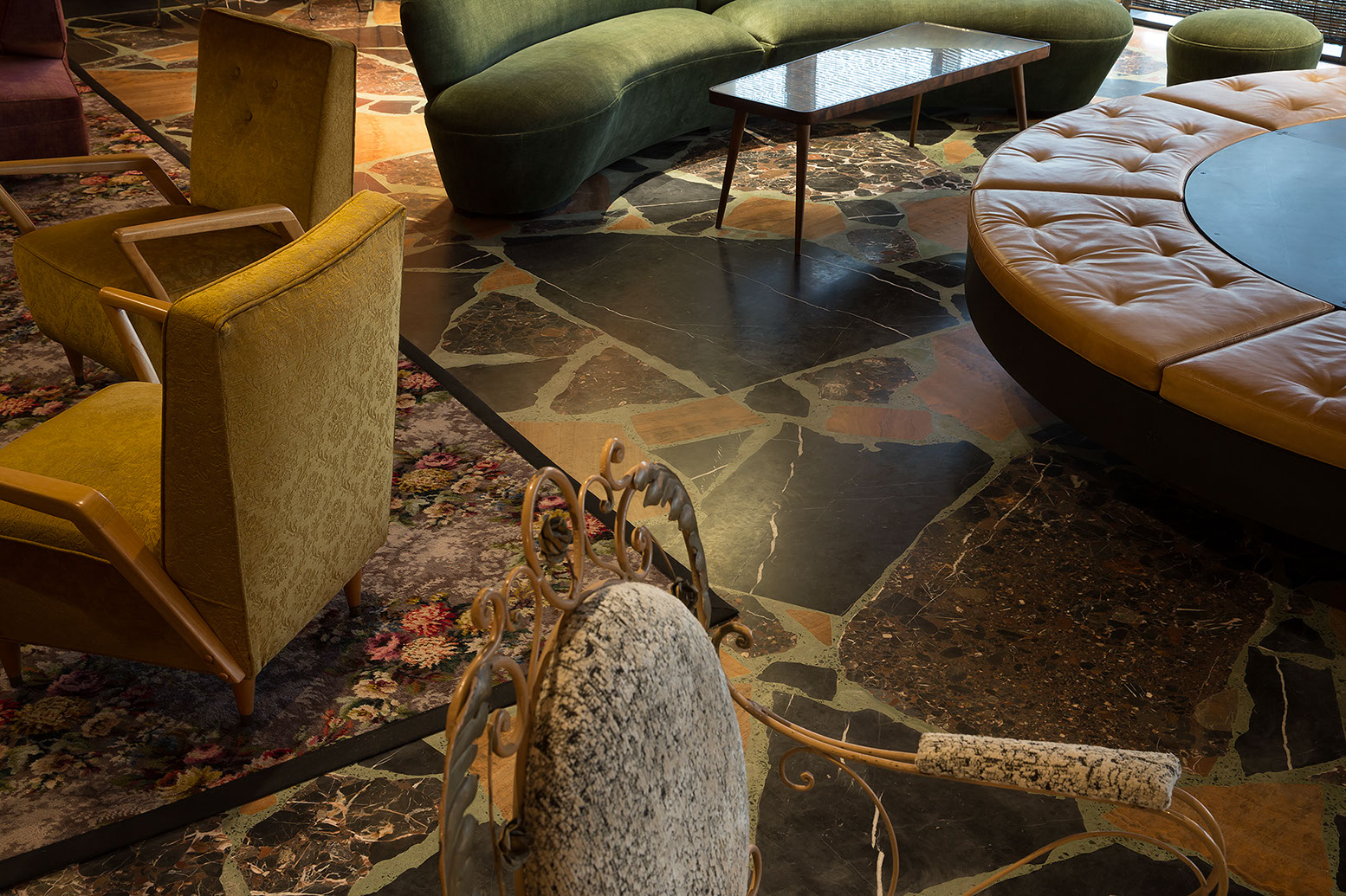A Place in Retrospect
Hotel Hotel was a project by Molonglo from November 2013 to March 2018. As time went by people built on its bones with their complicated layers and added to the plurality of this place; which in the end, was the whole point.
Hotel Hotel was a hotel in Canberra, Australia. We thought it up; and then we thought up innumerable iterations of that first thought, working with many people; artists, makers, designers and fantasists.
It was a messy, collaborative and cross-disciplinary design process. Slow, iterative and layered. It was a move away from a linear approach to design. A move away from the cookie cutter. An experimental soup of evolutionary biology that helped us learn from each other and try new ways.
The rooms were a response to our dry bush capital, Canberra; a re-imagination of the textures and layers of an Australian shack and landscape. We channeled these textures through raw materials – reclaimed oak, earthen clay, concrete, cork, linen, brass, grass wallpaper, woollen carpets. We custom designed many of the pieces there: the lights, stools, chairs, tables and beds. Local craftspeople fabricated them, drawing on skills that, over the years, have become precious.
These rooms were conceived of as temporary homes; grainy envelopes to occupy as your own.
Half of the rooms looked out of their opening hardwood windows onto the lake or bush and half looked into the internal atrium populated with tree ferns salvaged from Tasmanian forests destined for clearance. On top of the rooms, high up in the pineapple shaped Nishi building, sat the apartments. While our rooms were a cacophony of textures, the apartments acted as white space waiting to be filled. Each one with views of either the hills or the lake.
The furniture collection in the rooms, apartments and public spaces were an important part of our narrative: salvaged and restored 20th century furniture mainly made in Australia (and the occasional piece from New Zealand, Italy, France and Brazil). These pieces are familiar and feed our nostalgia. They come with a history, having soaked up stories from their makers, their owners and the postwar homes they once occupied.
Our furniture collection grew to become an active catalogue of pieces made by little known designers such Paul Kafka, George Kóródy and Gerstl. It is (to our knowledge) the largest public collection of this type of furniture in Australia. Some of the stories of these little known interior designers and furniture makers are included in ‘The Other Moderns’: a 300-page book edited by Rebecca Hawcroft that we co-produced.
These furniture pieces are central to the Monster kitchen and bar, the restaurant come through fare on the ground floor, where we made the Salon and Dining rooms. The spaces were an ode to postwar immigrants coming to Australia from the 1940s to 1980s in search of a better life… And the eclectic-kitsch tastes they brought with them. It was an important chapter on how immigration increases the textures, layers and dimensions of a place’s cultural fabric.
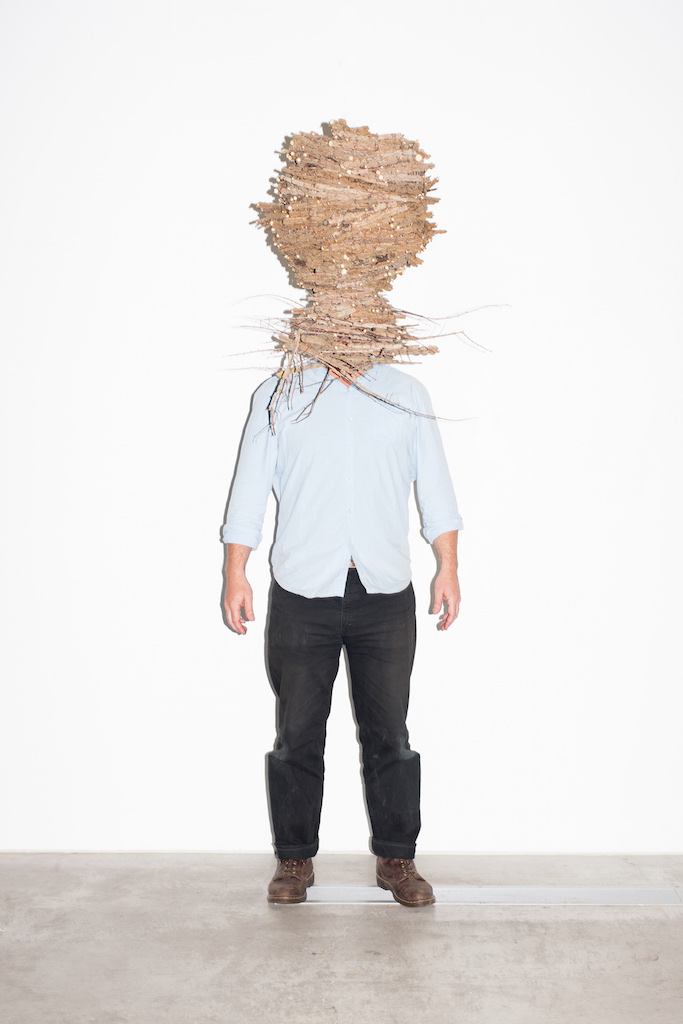
Like any domestic space, Hotel Hotel continued to unfold and change long after it was built. (Image of Honey Fingers at 'Swarm Trap' exhibition shot by Charlie White.)
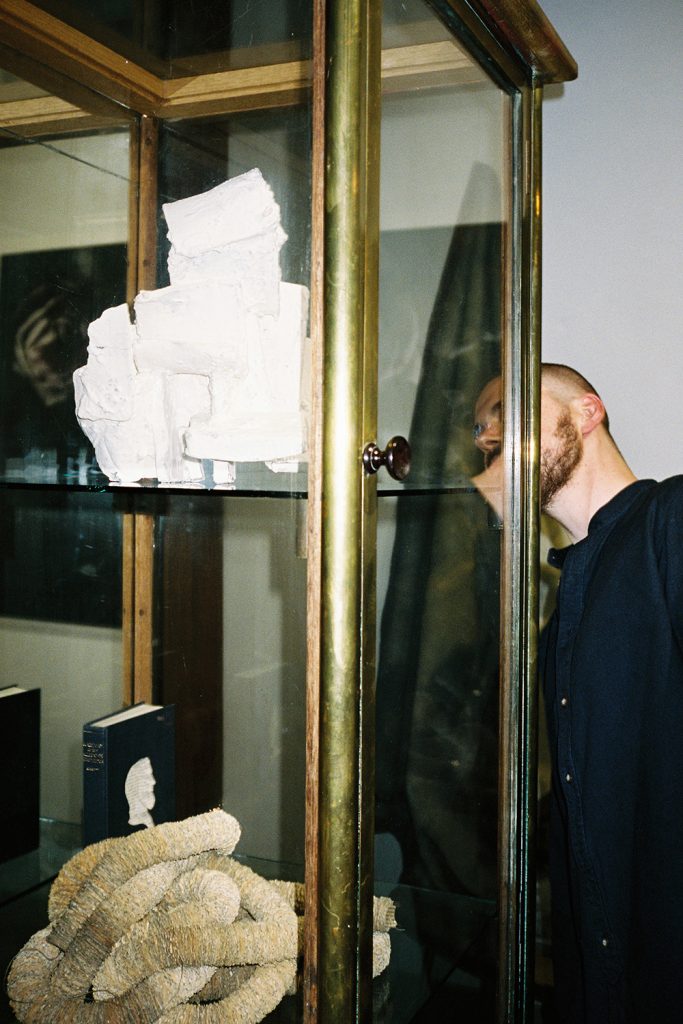
Old friends and new friends added to this place by way of creative projects. (Image of 'Perfect Imperfect' exhibition opening shot by Will Neill. )
Like any domestic space, Hotel Hotel continued to unfold and change long after it was built. Old friends and new friends added to this place by way of creative projects – exhibitions, talks, workshops and performances. These layers added to the plurality of the place; which in the end, was the whole point.
Hotel Hotel was also shaped by the lived experiences of the guests that stayed there and the many beautiful people that work(ed) there; that loved it and treated it as though it was their own home.
